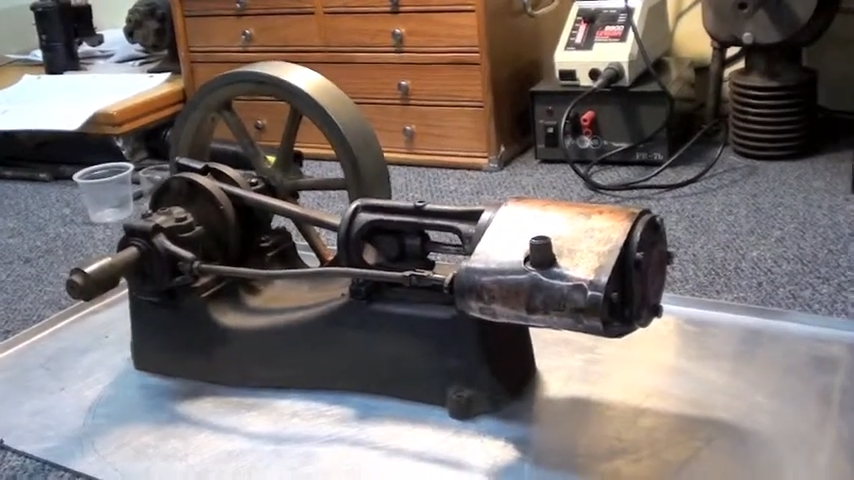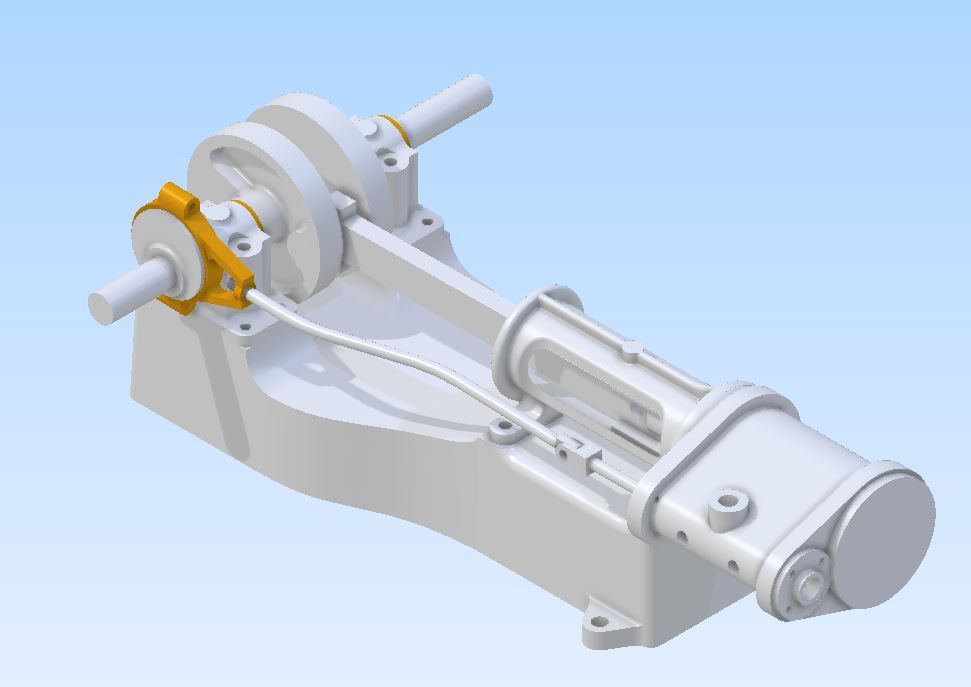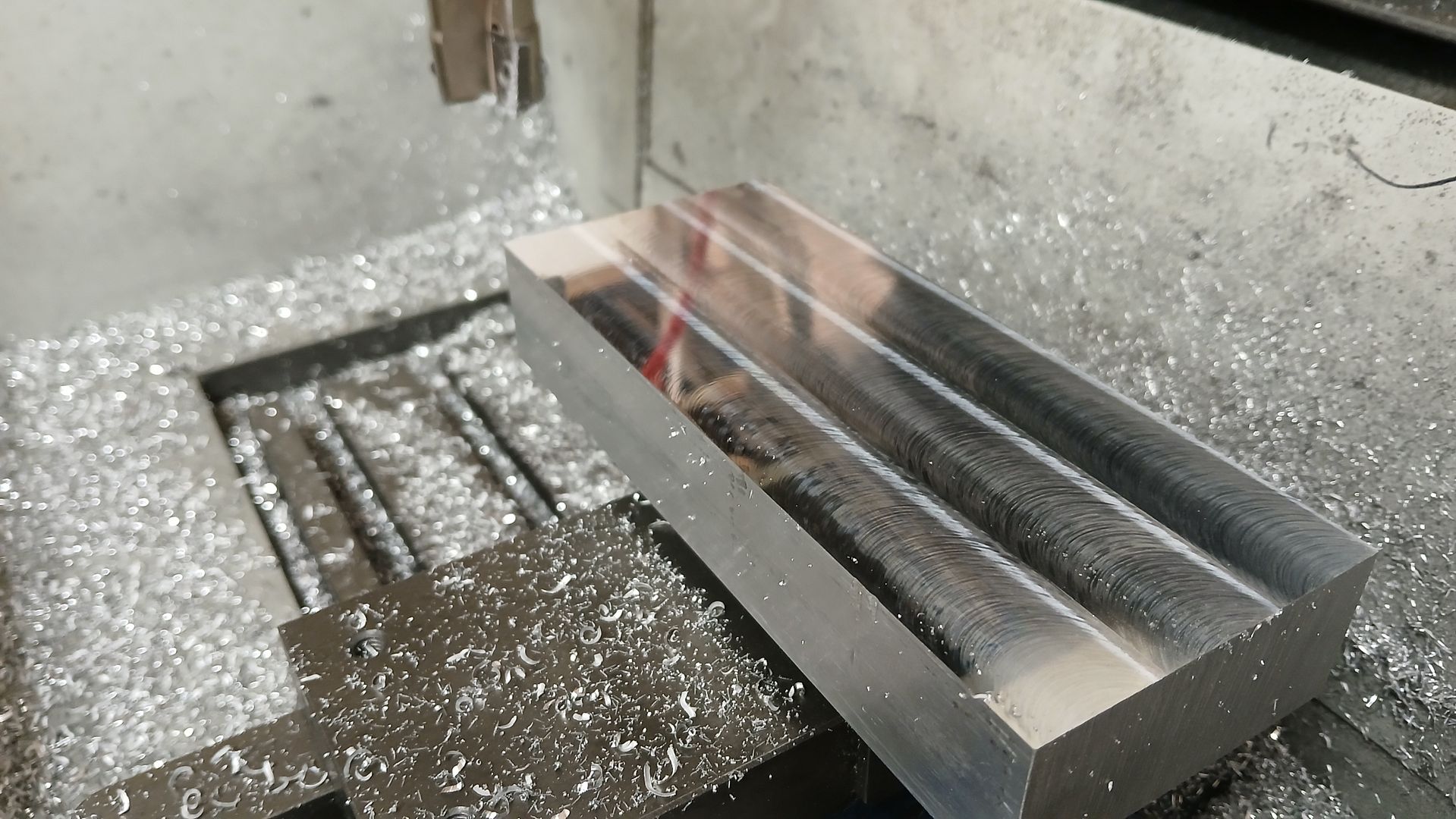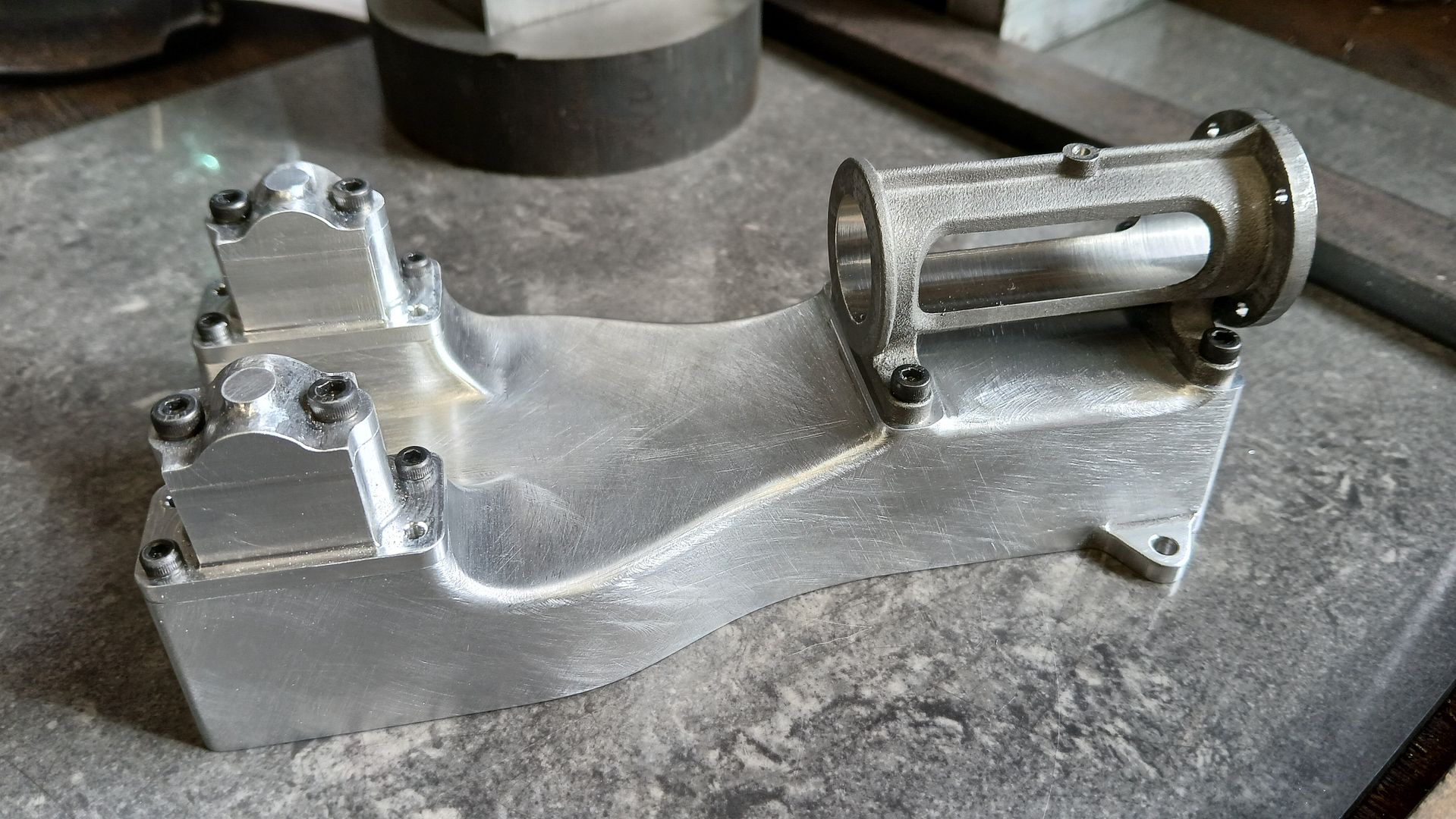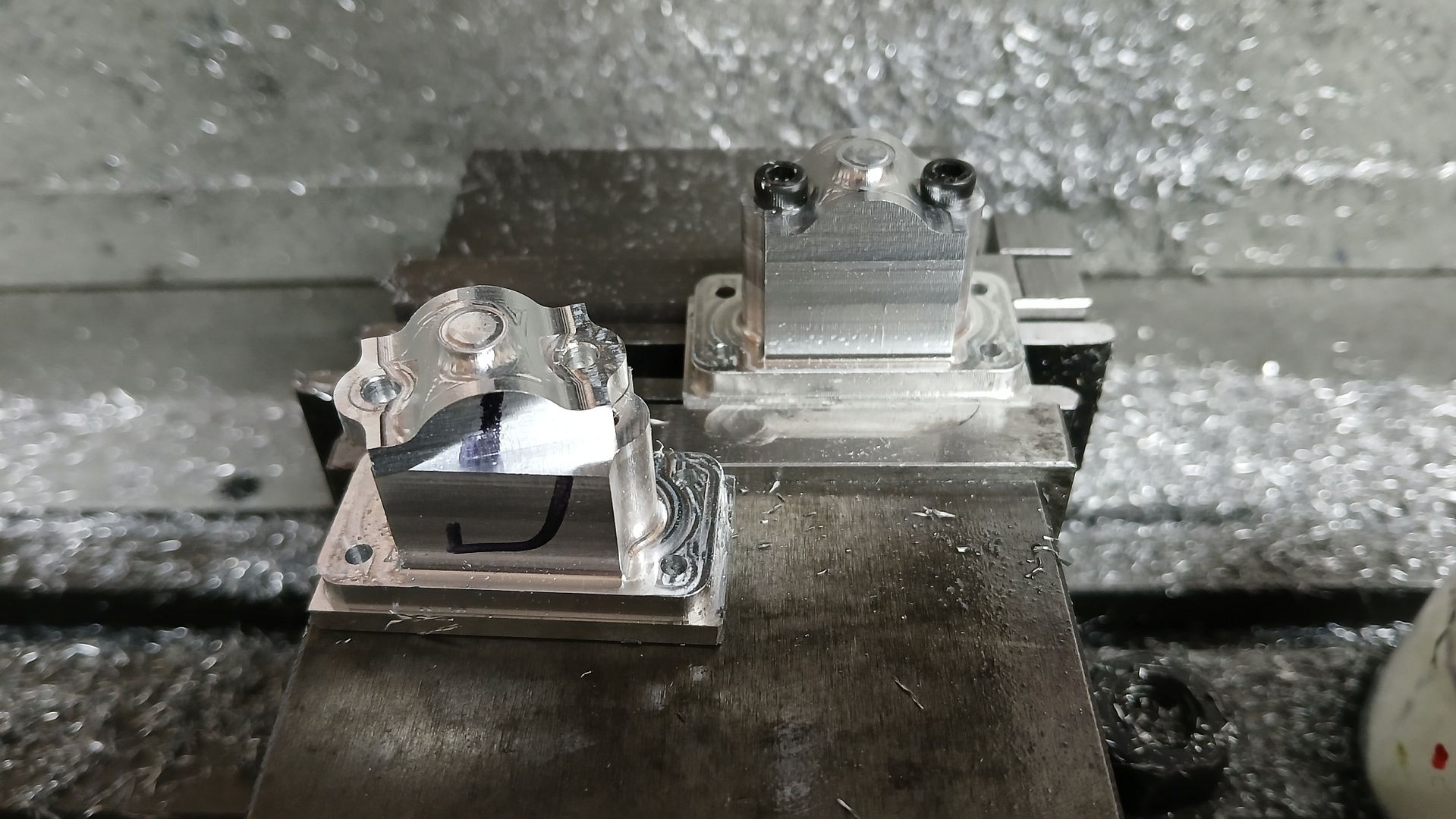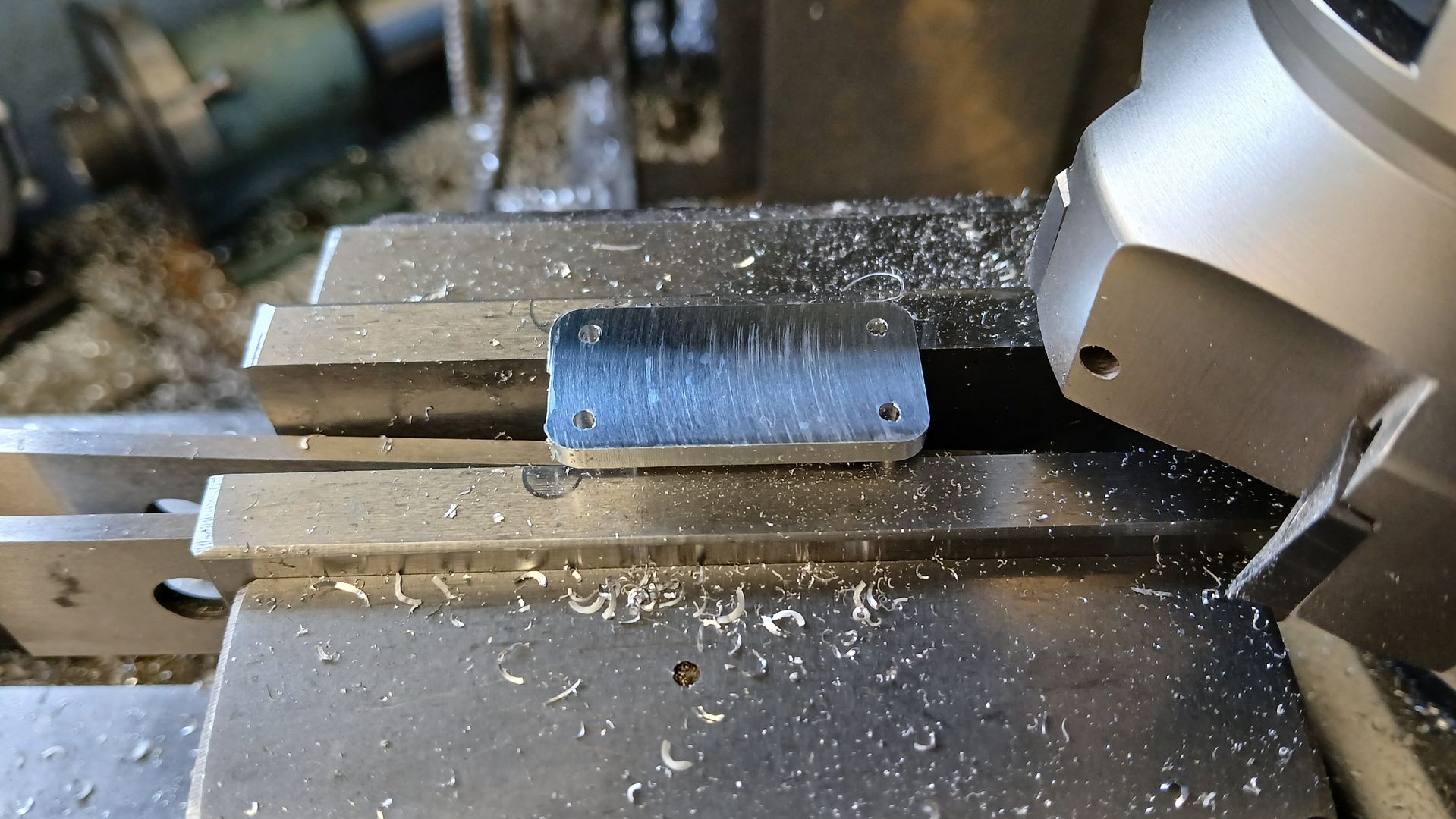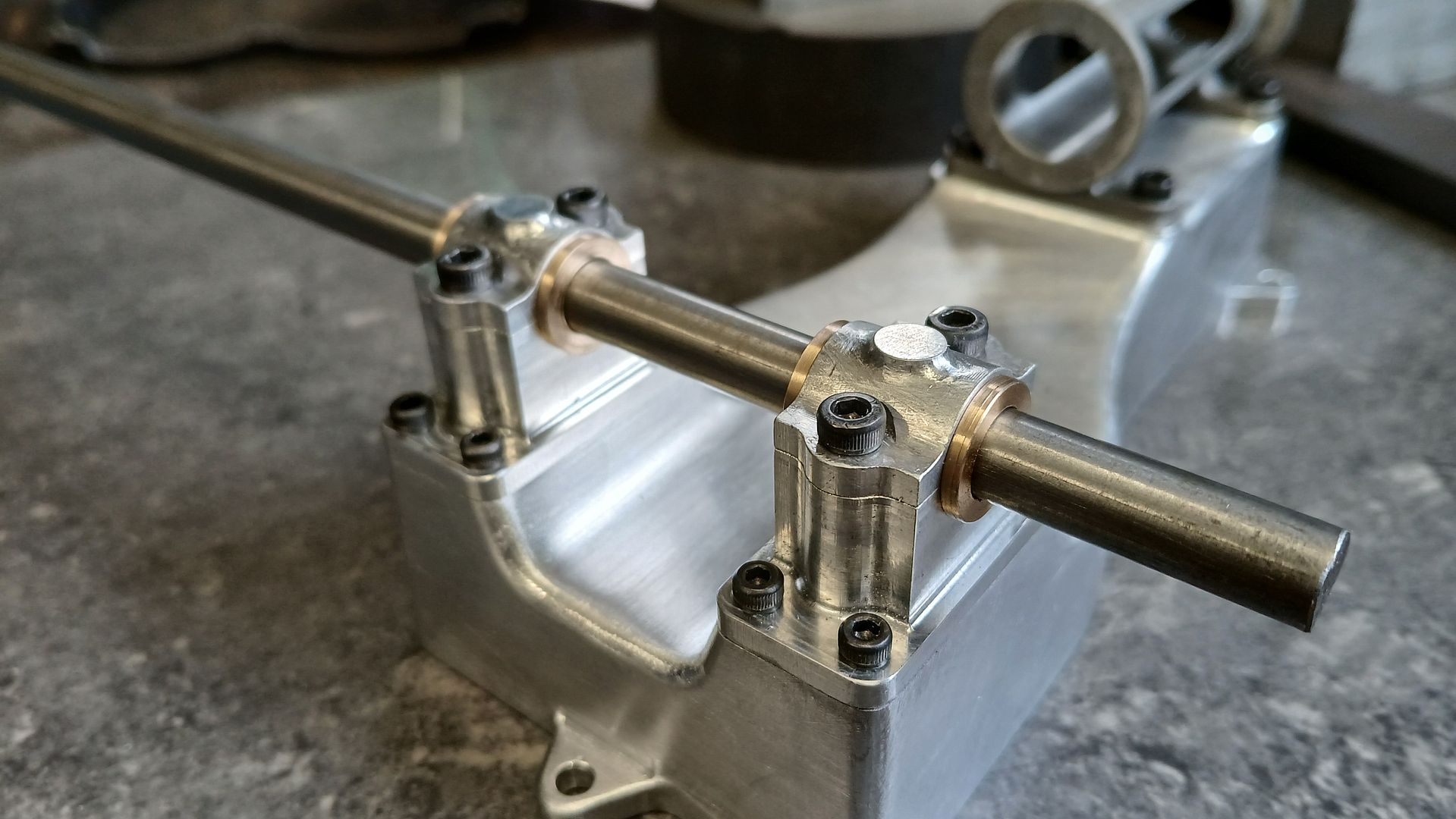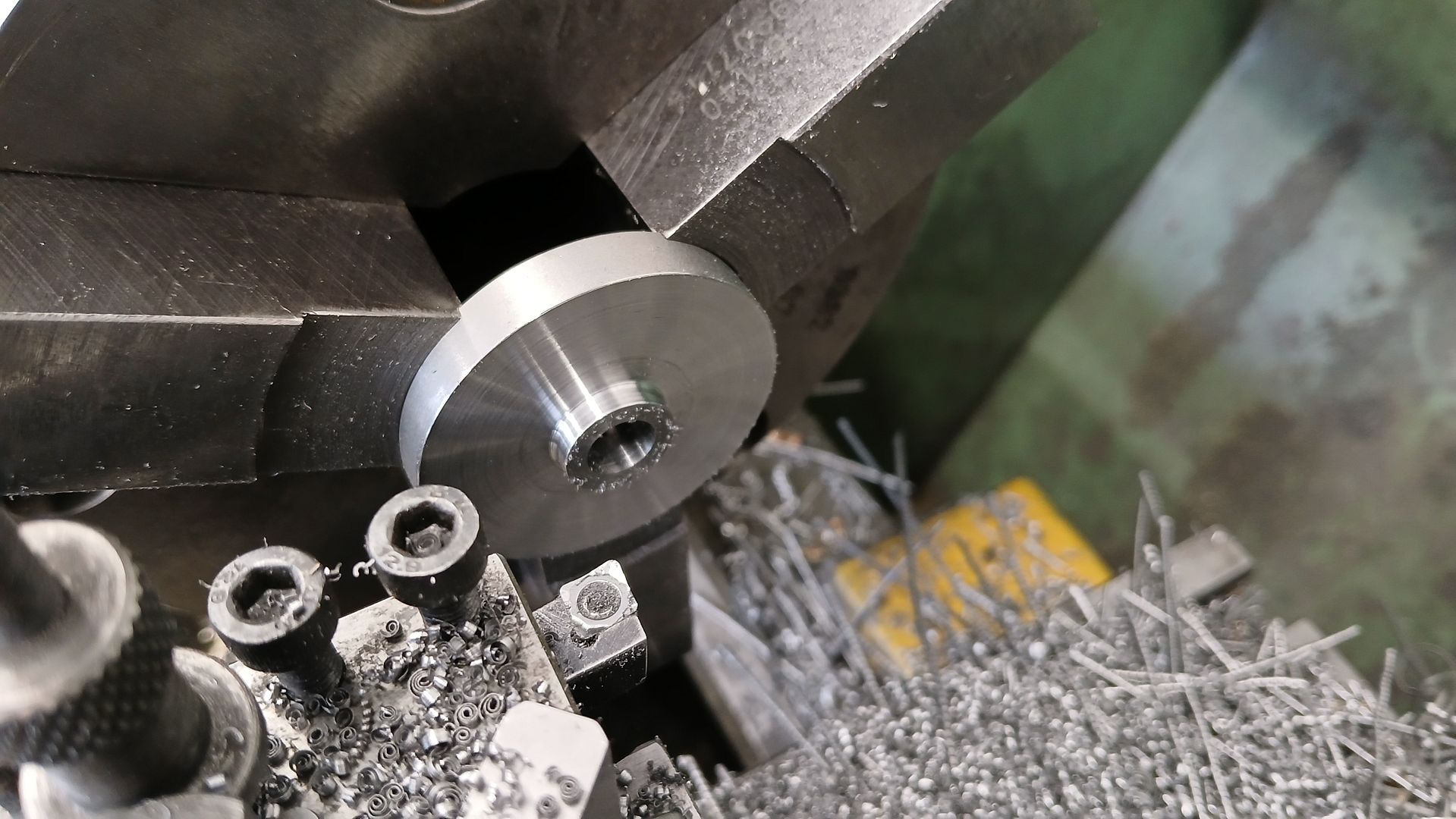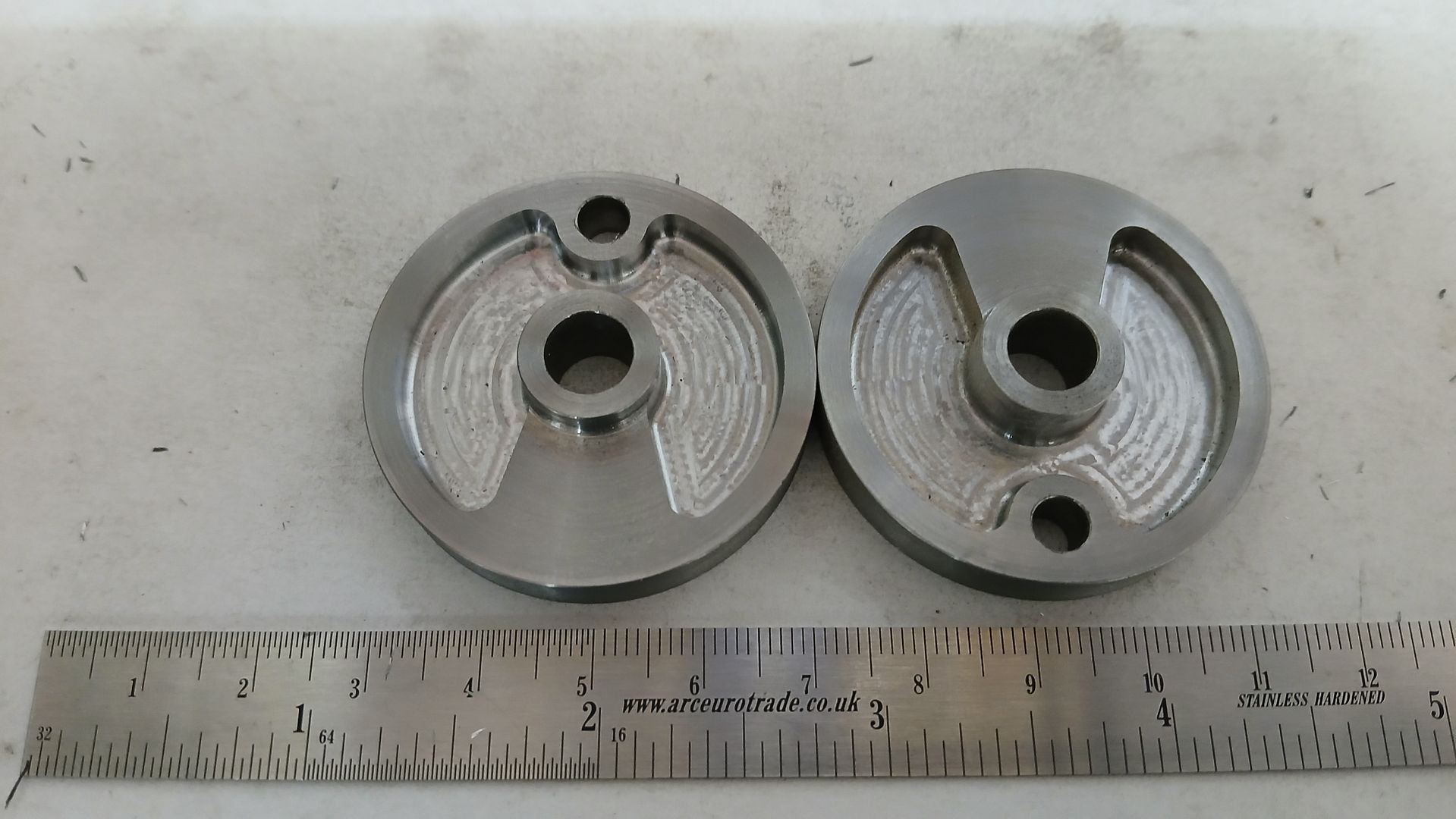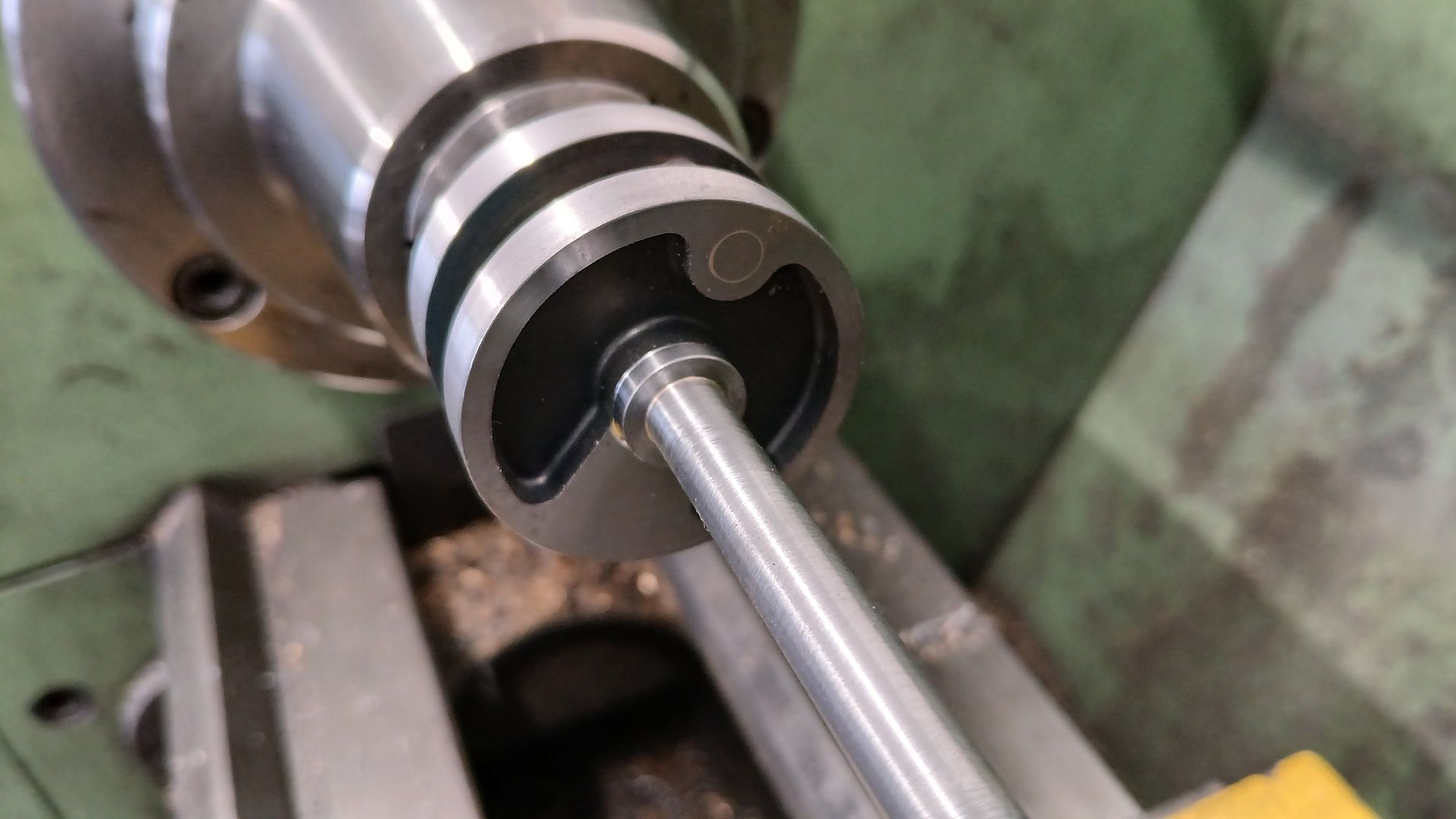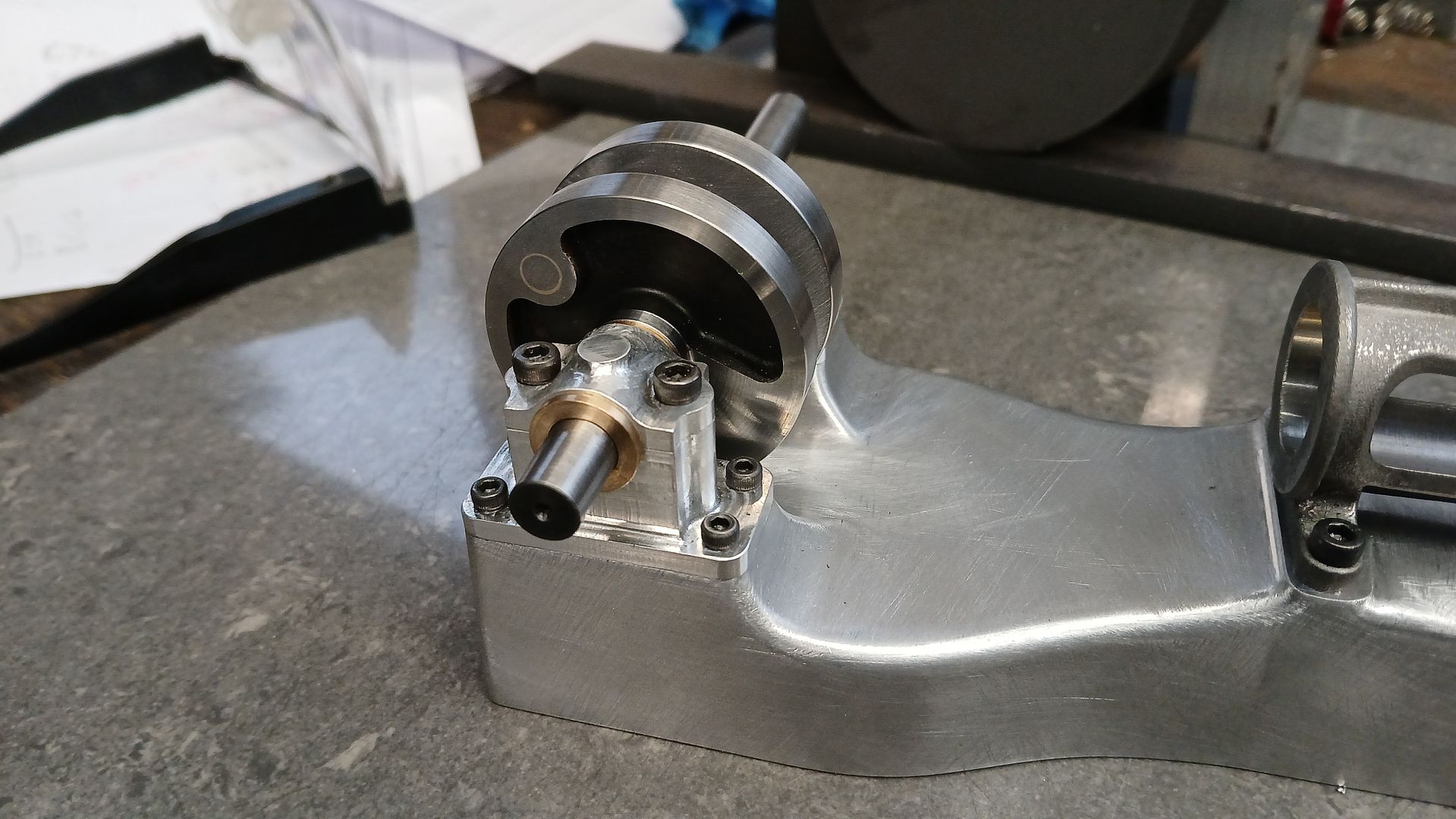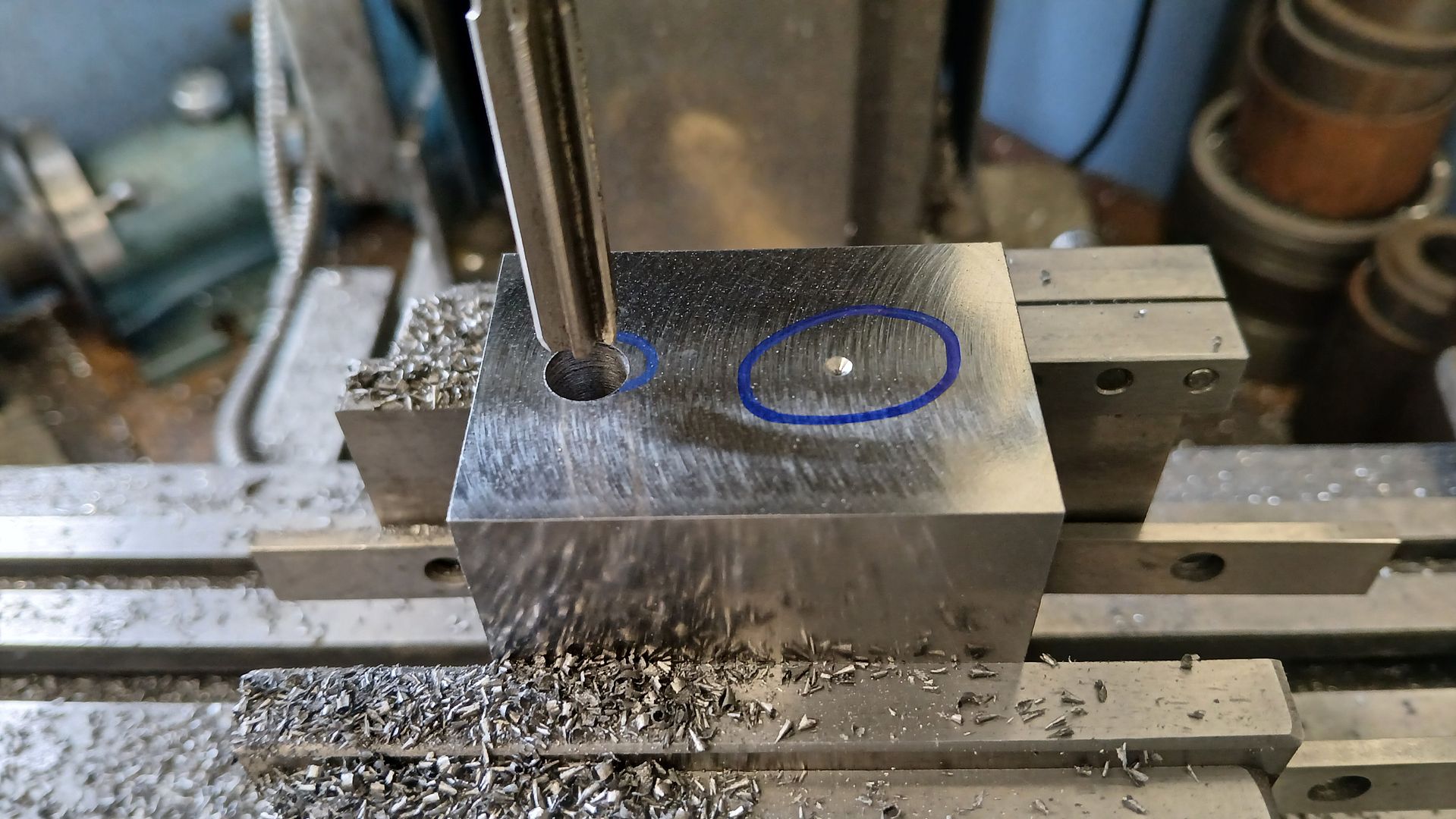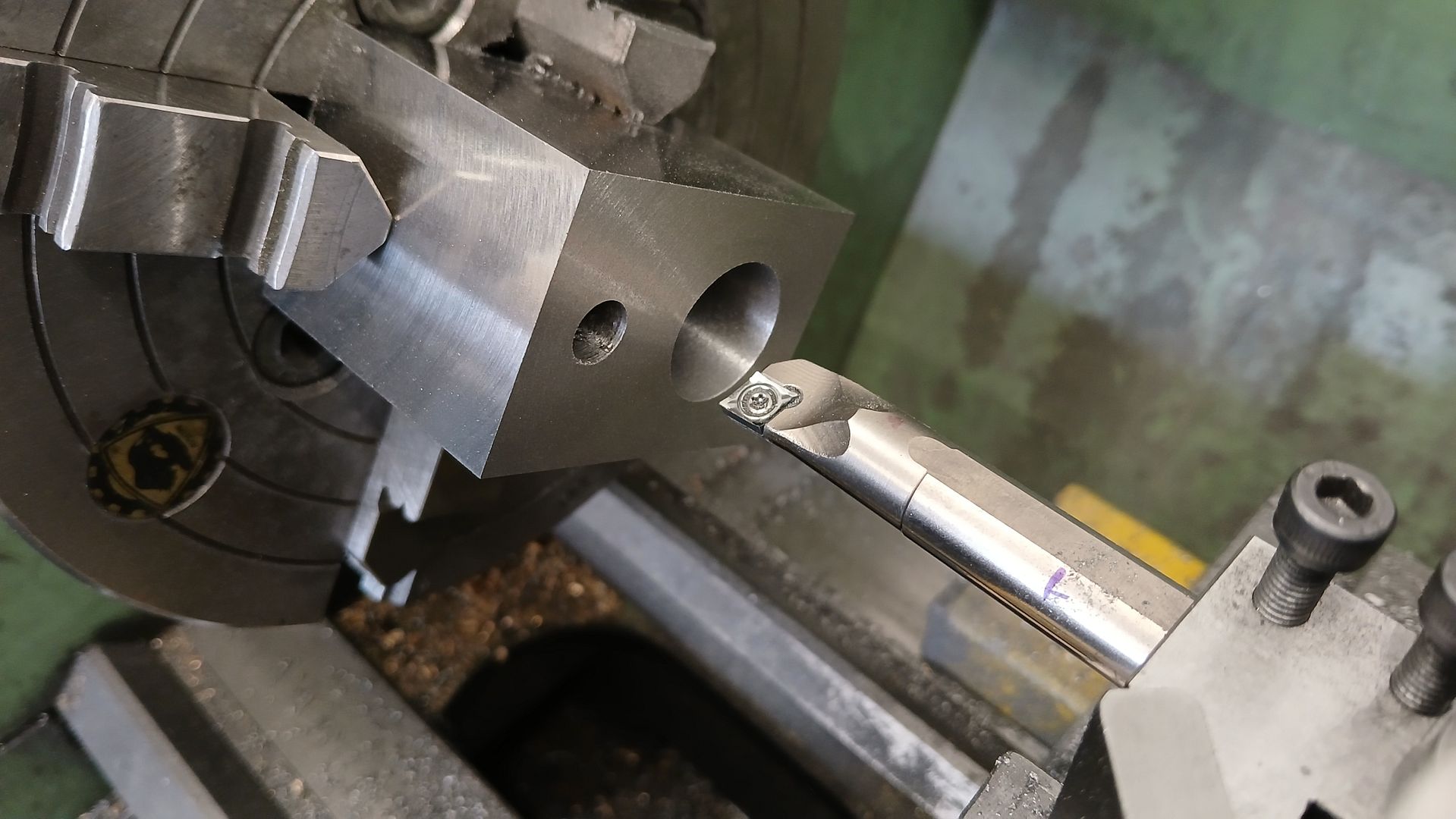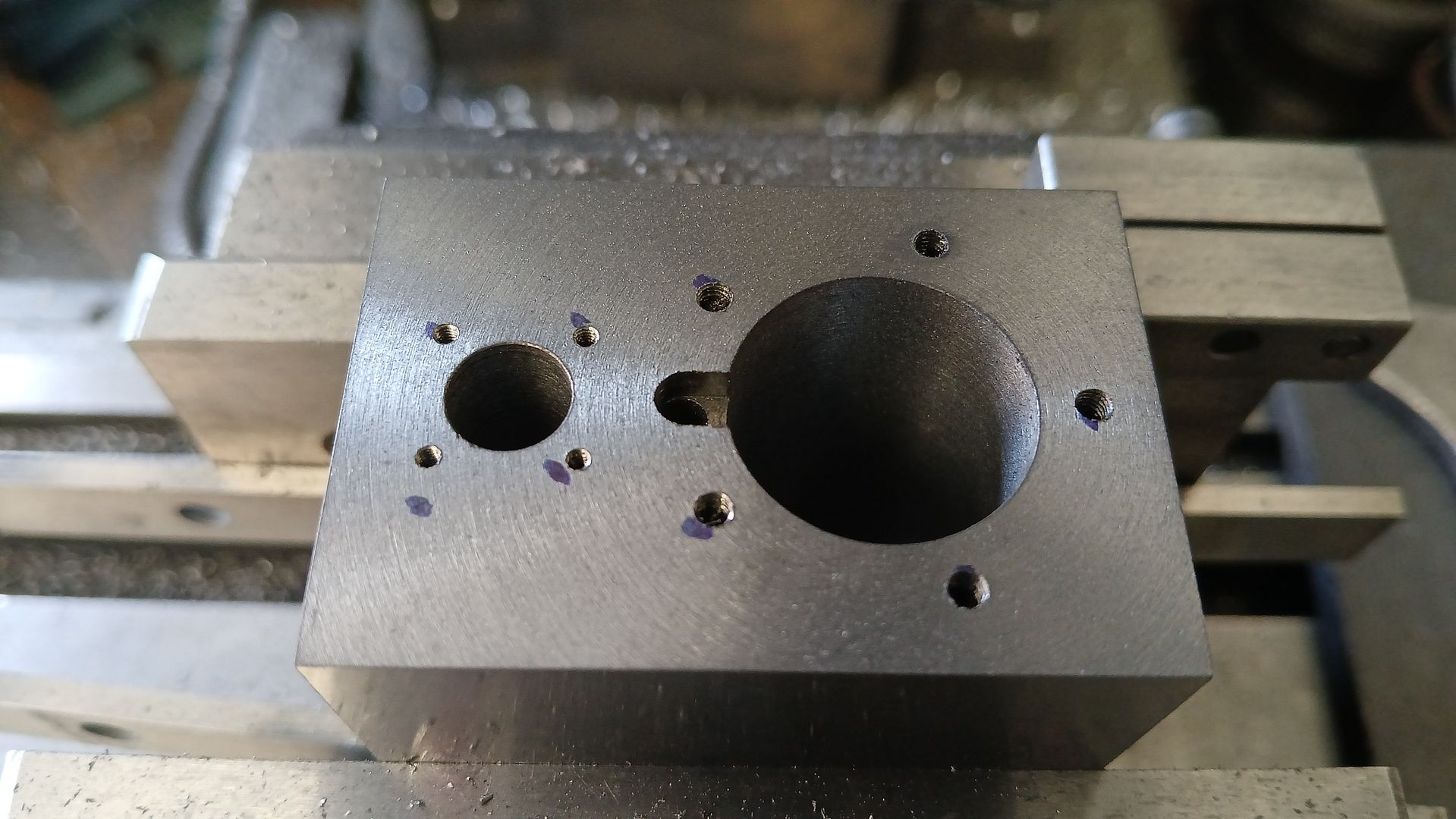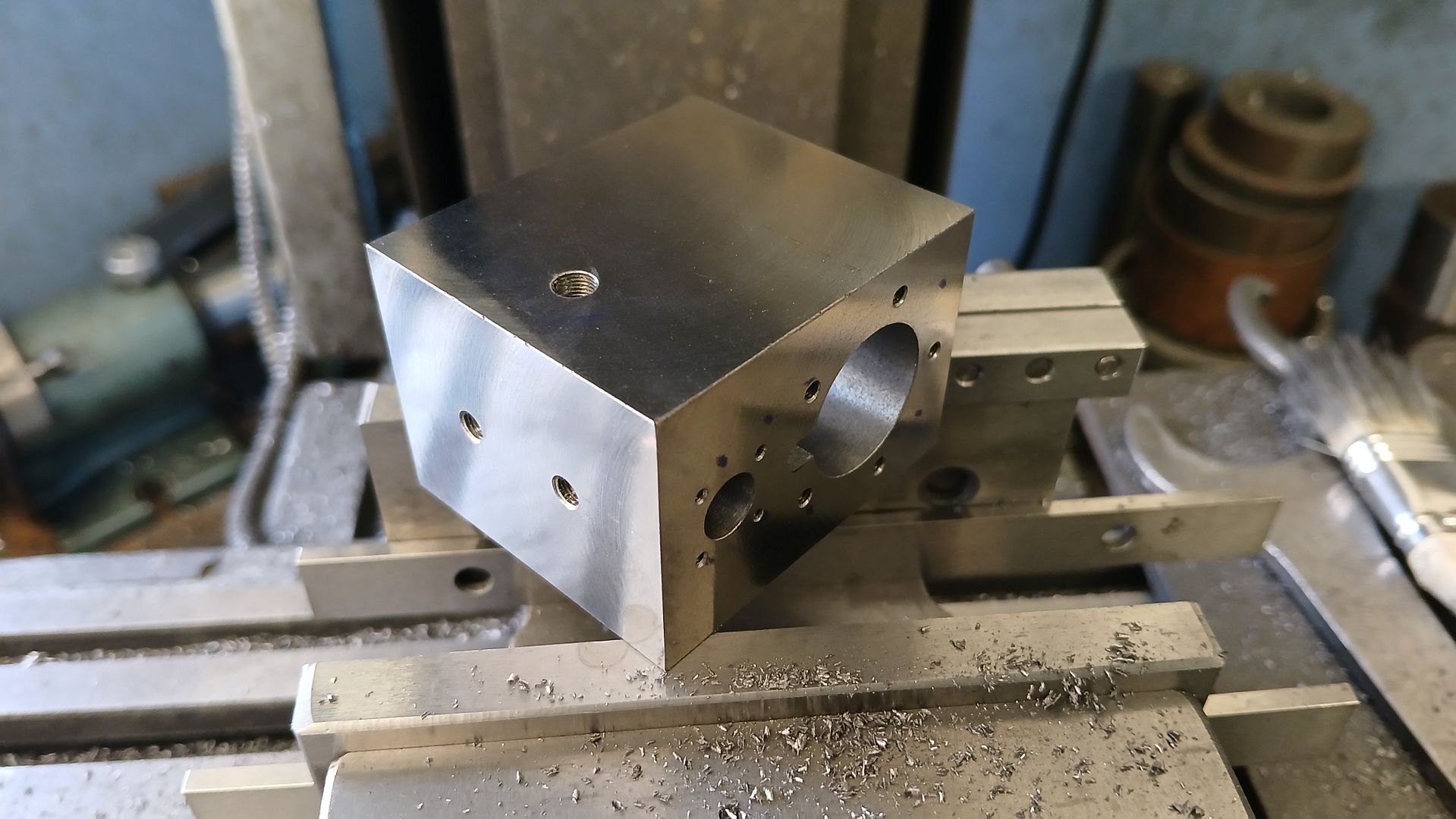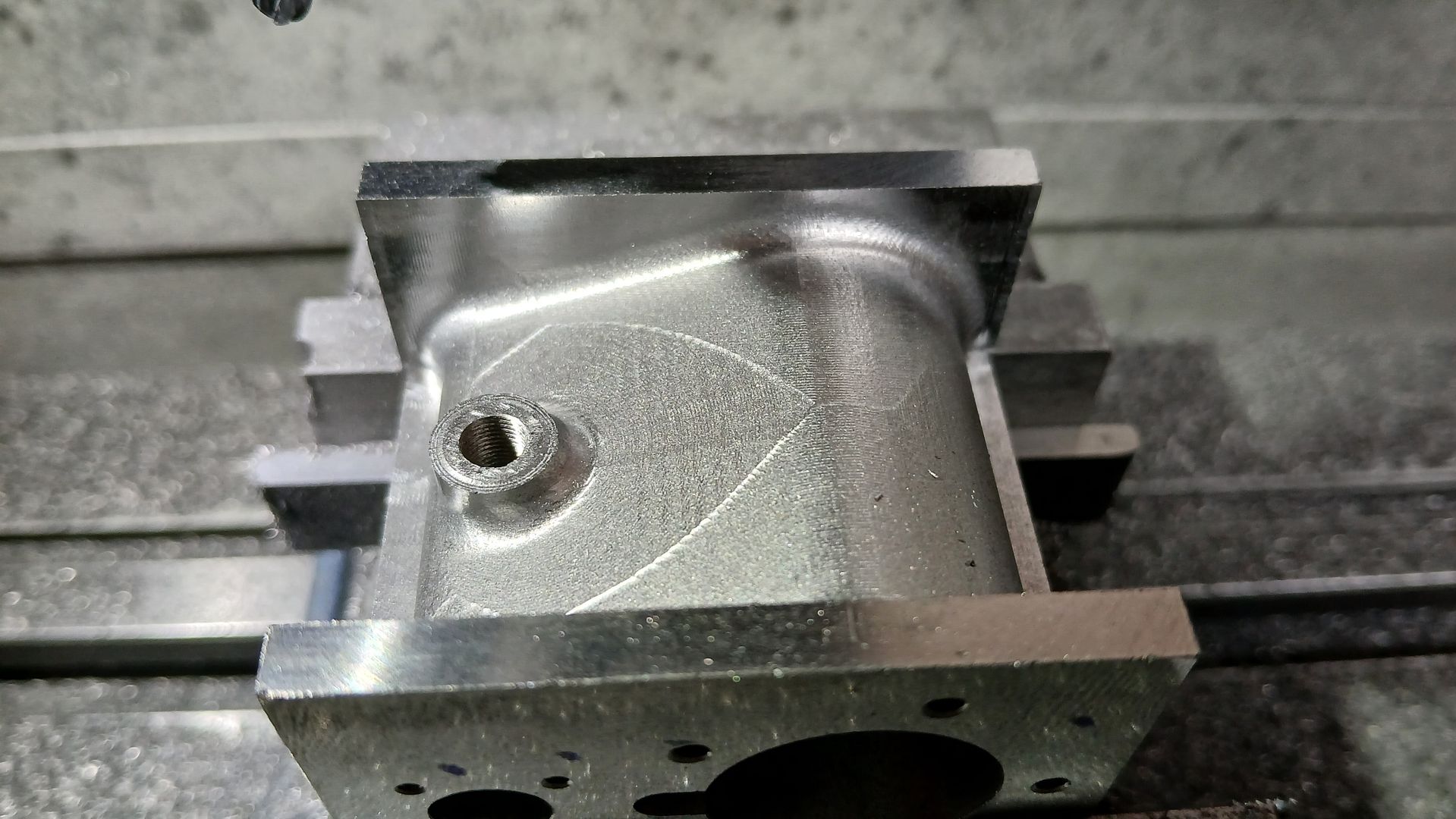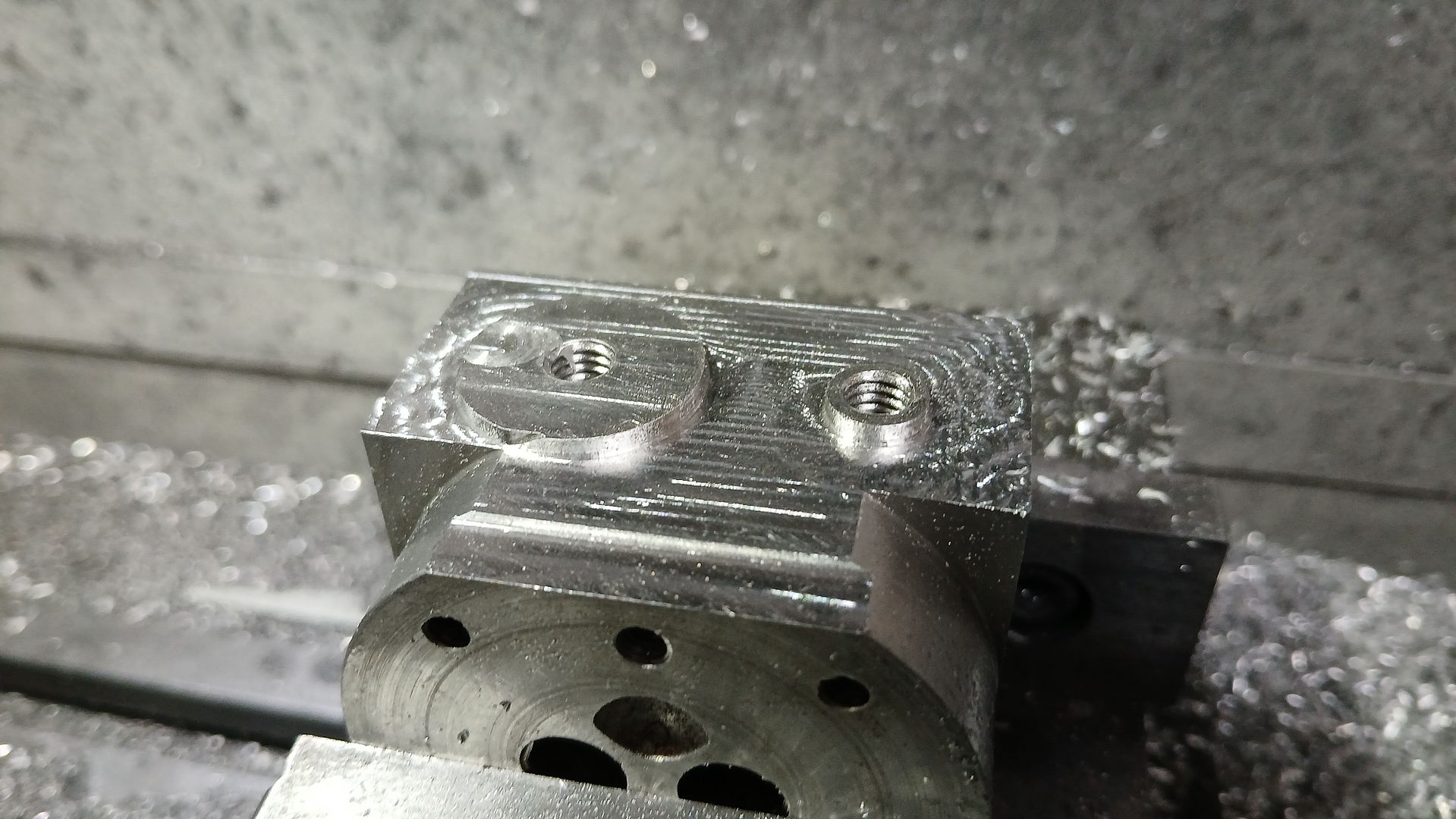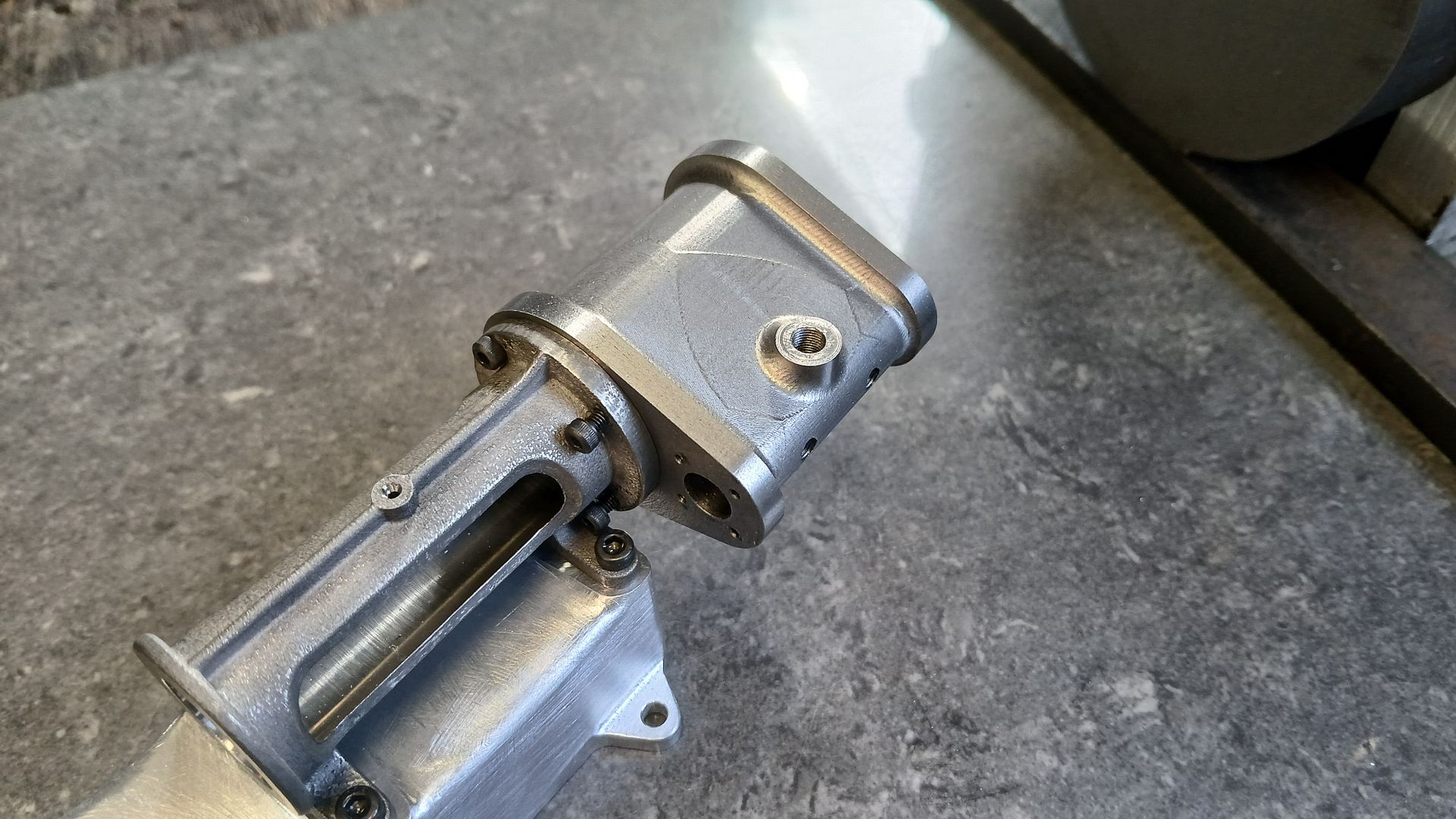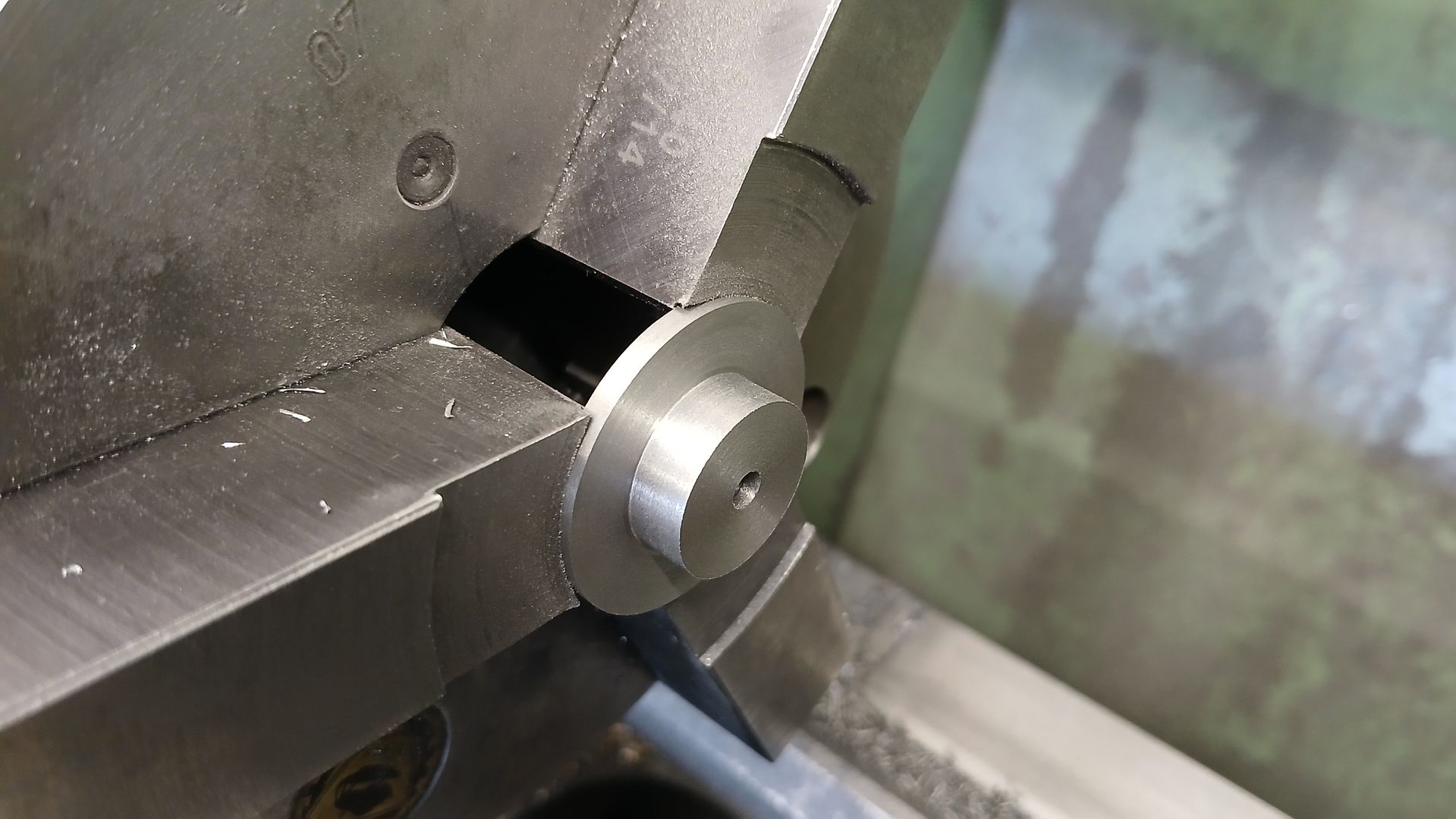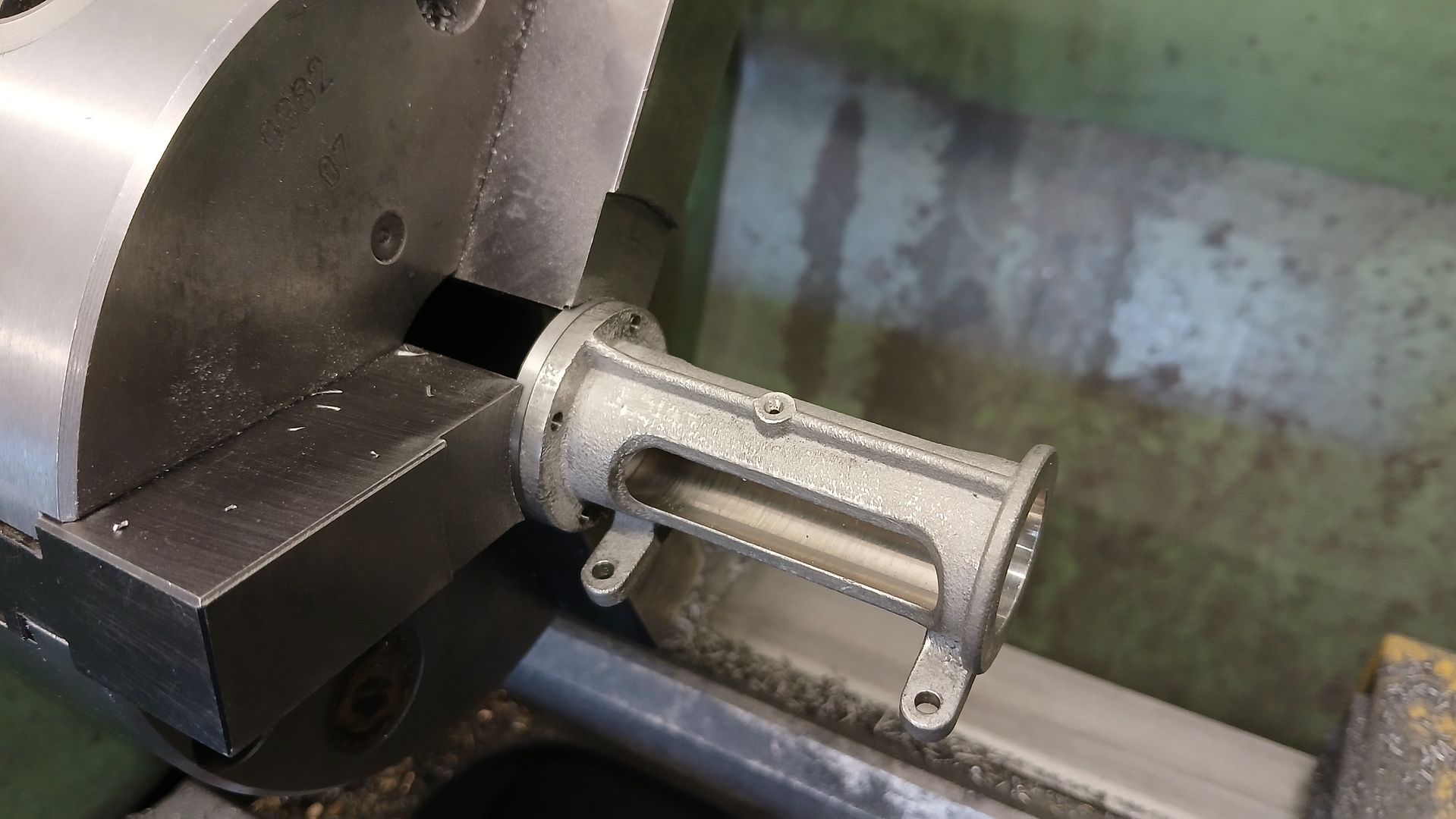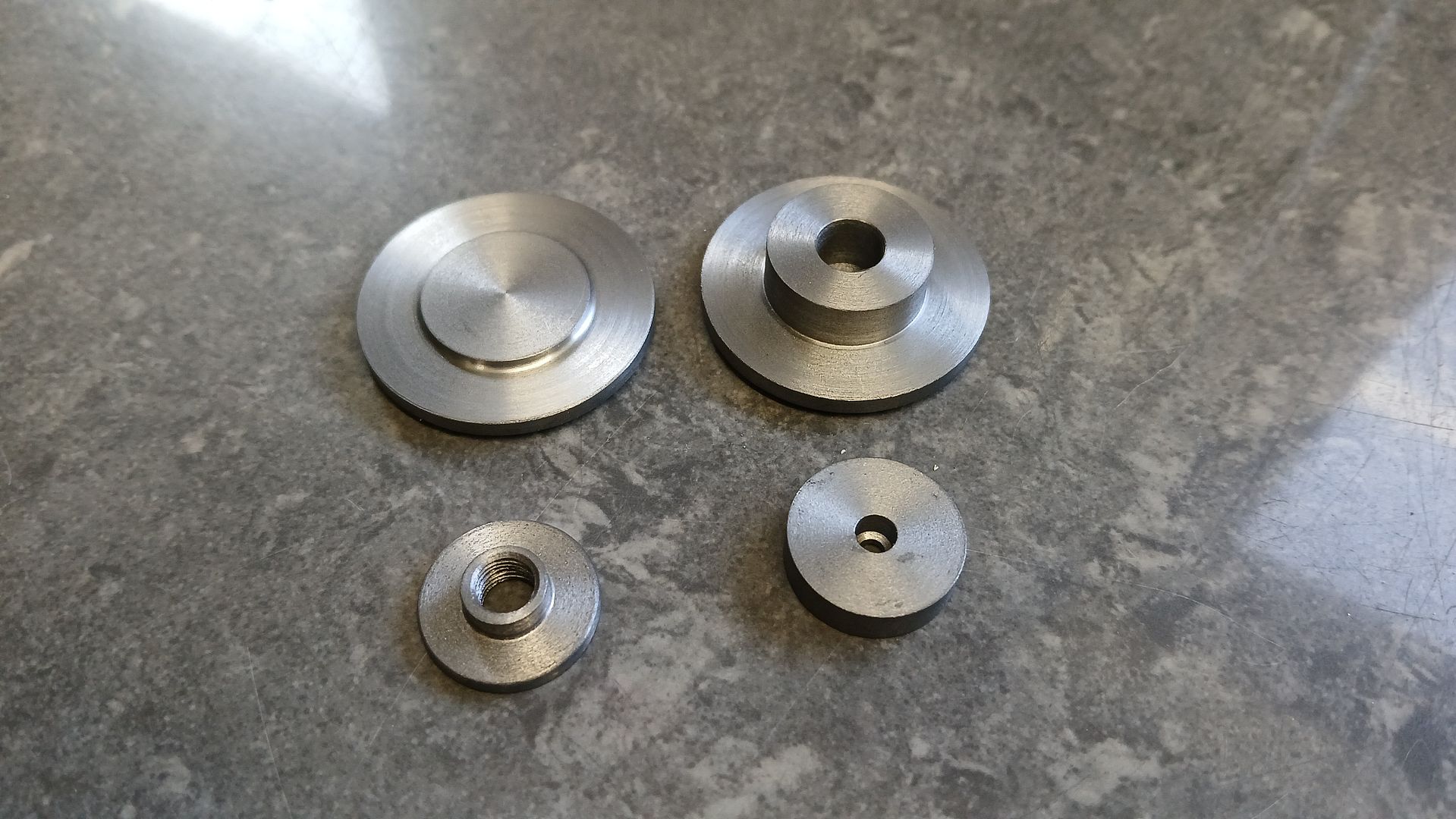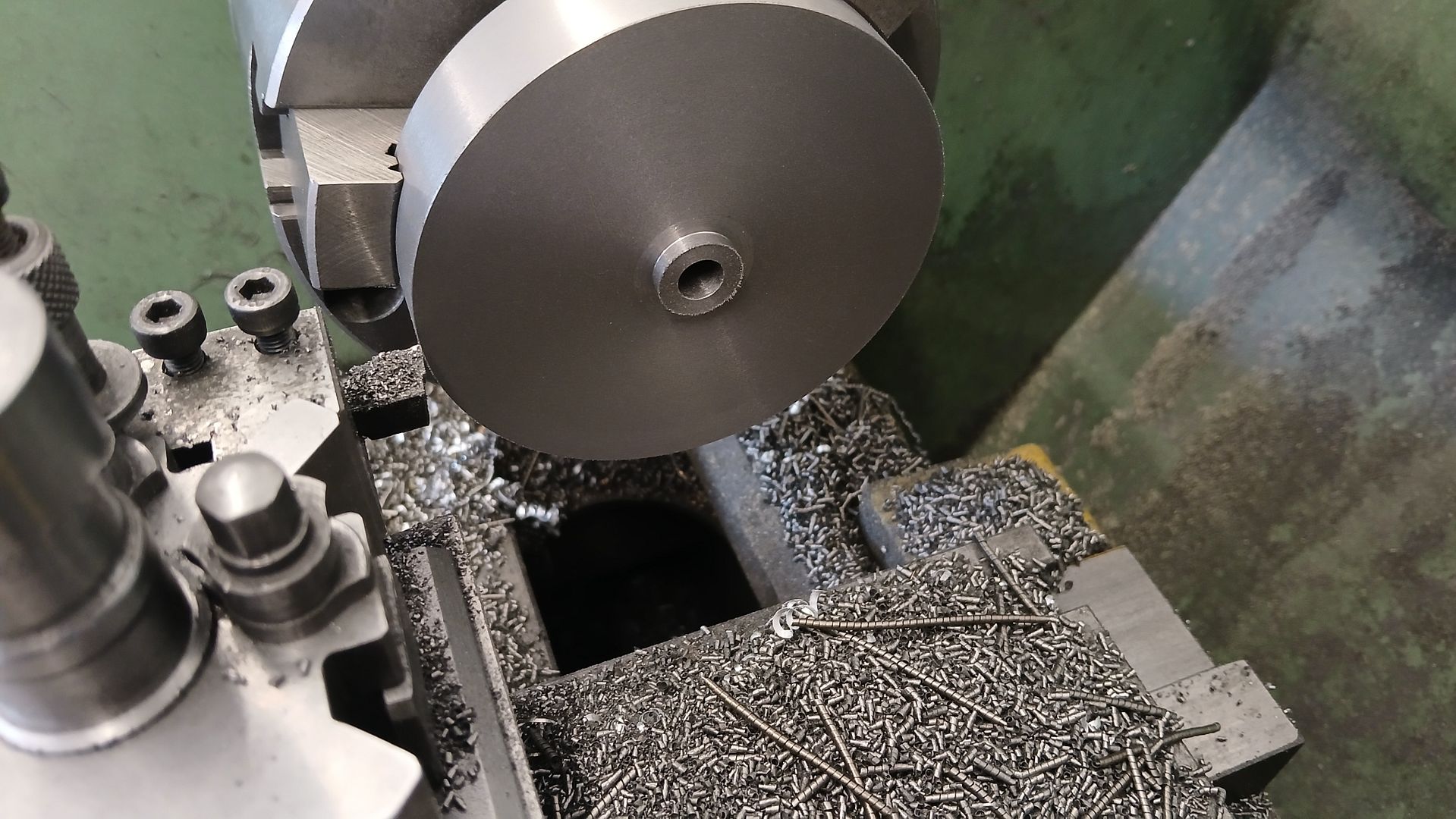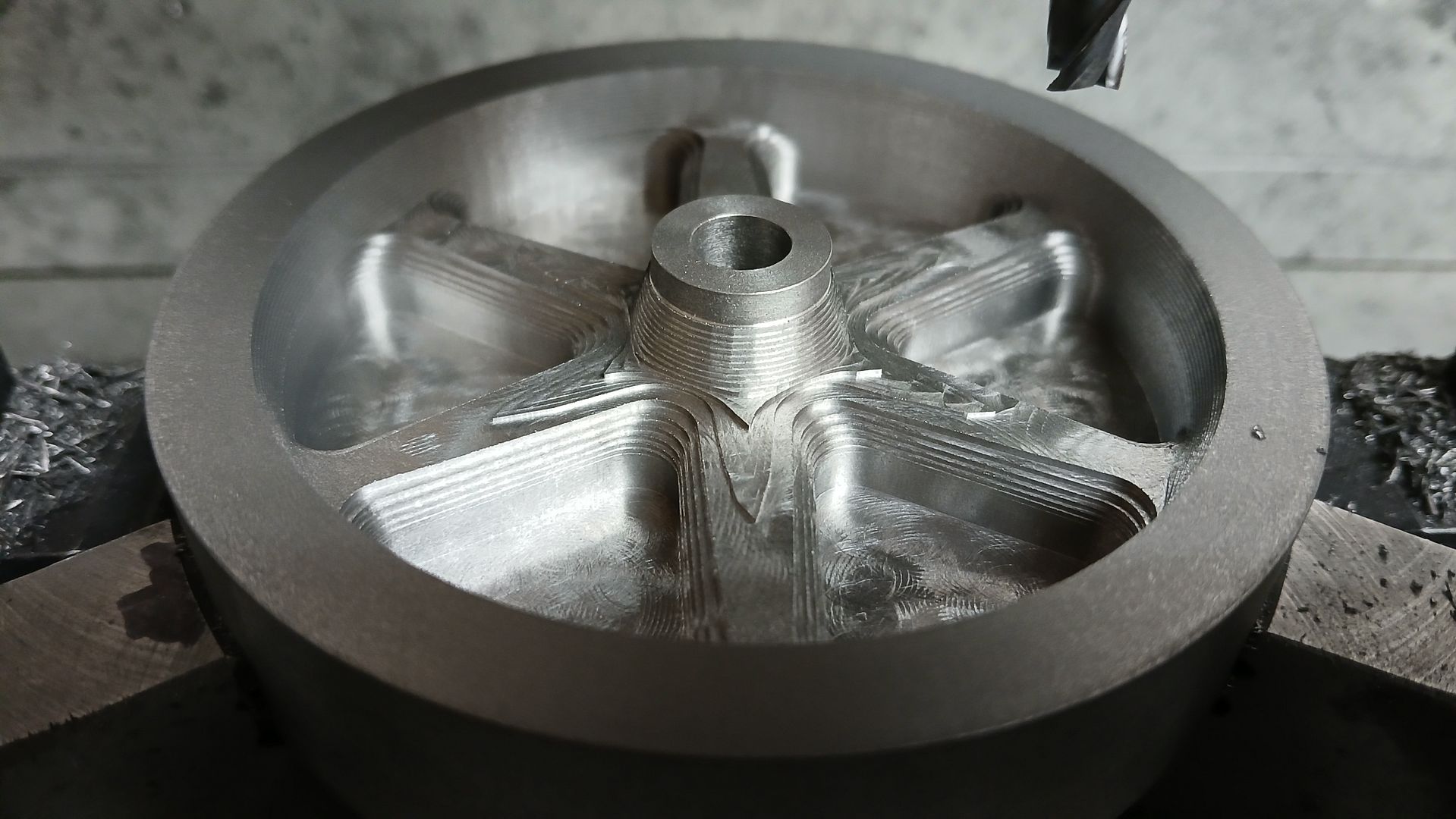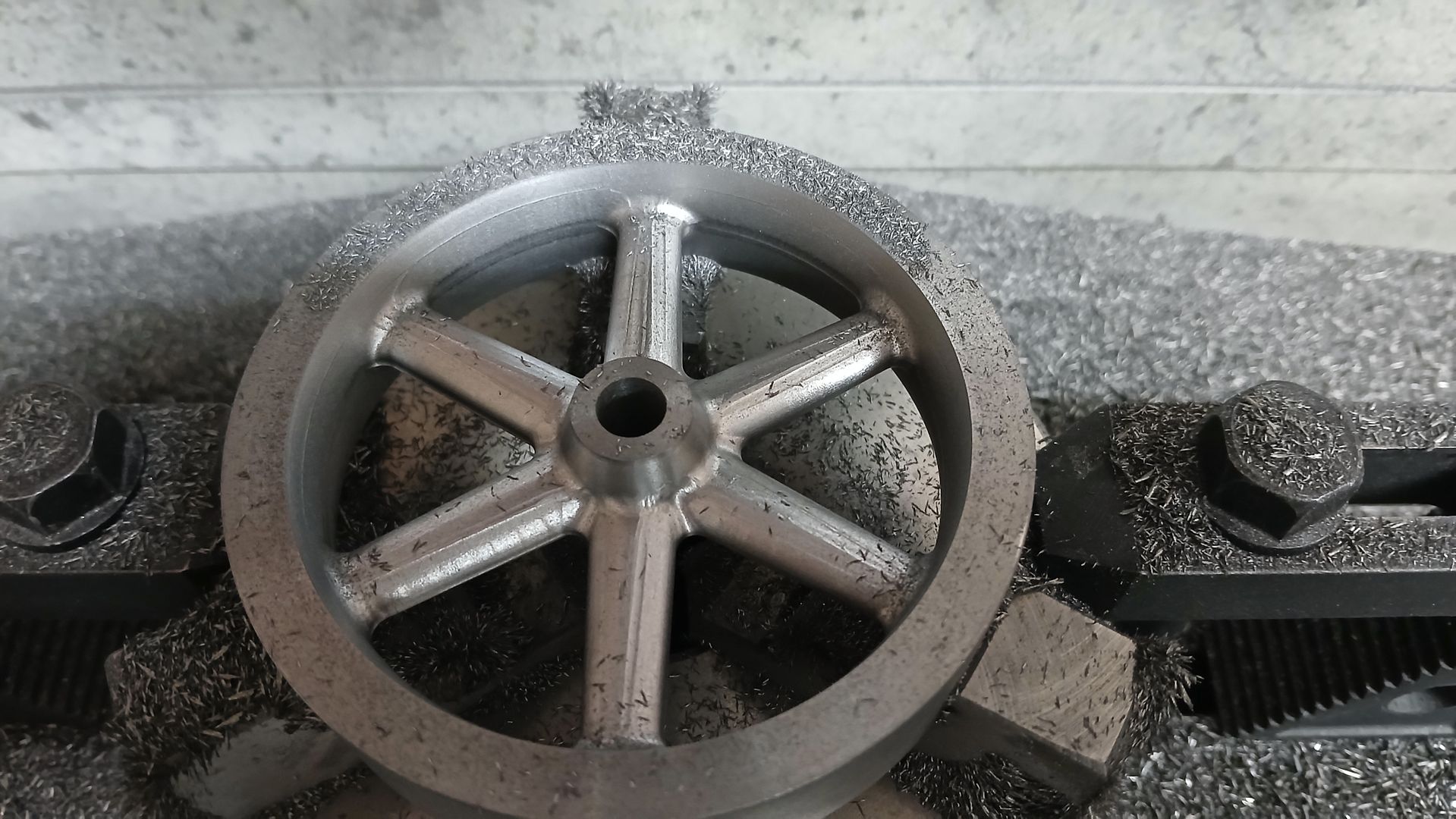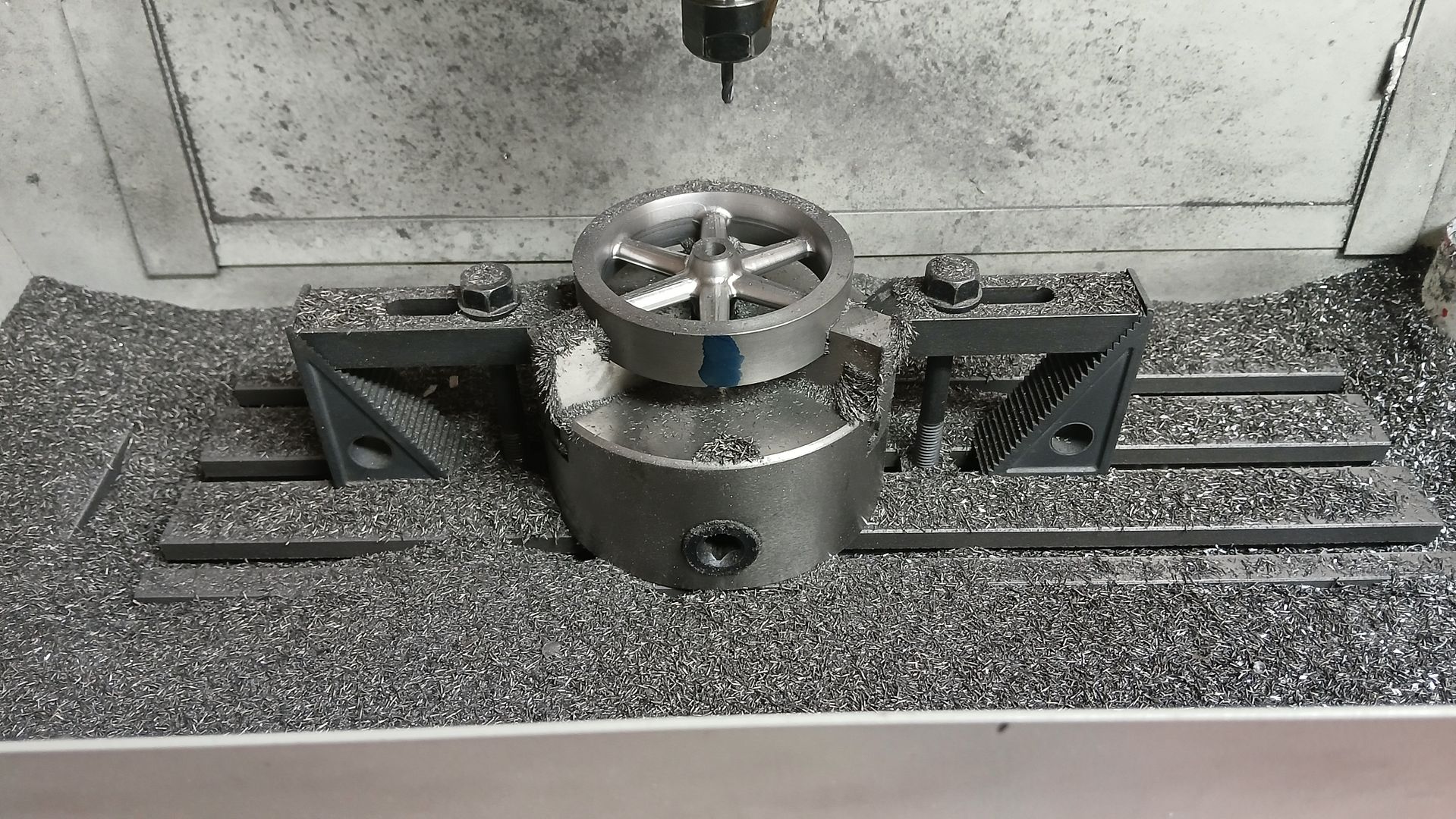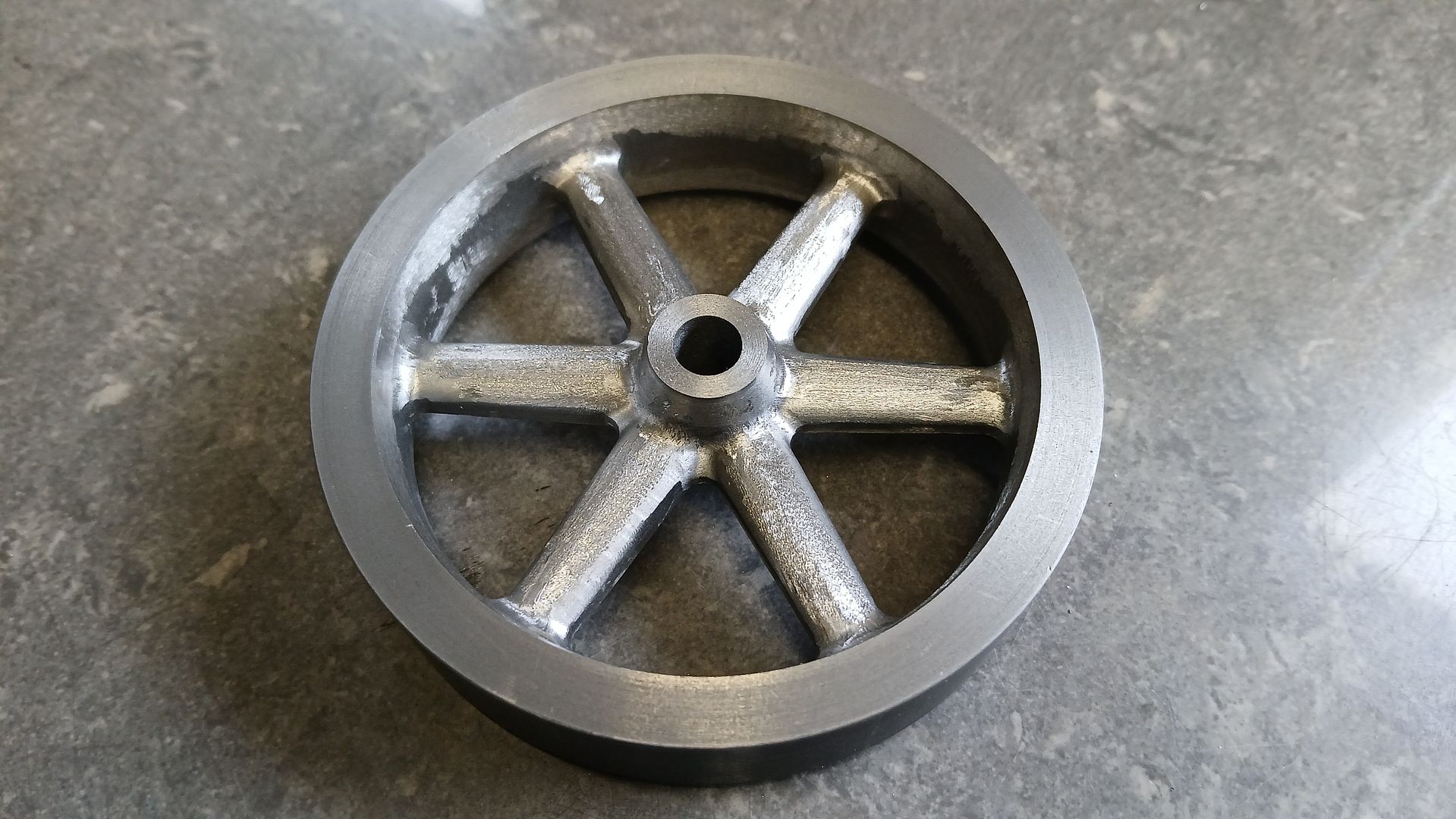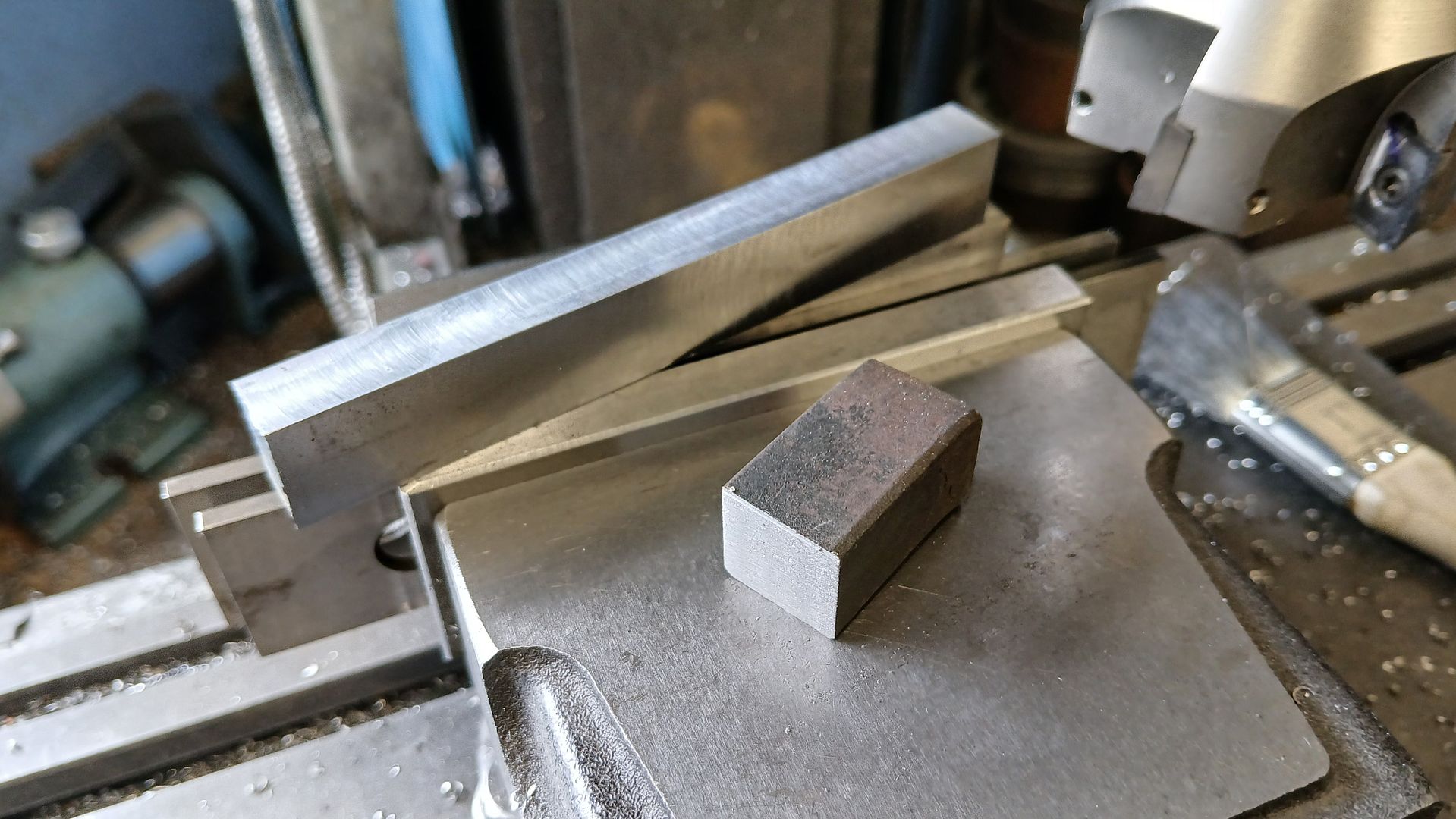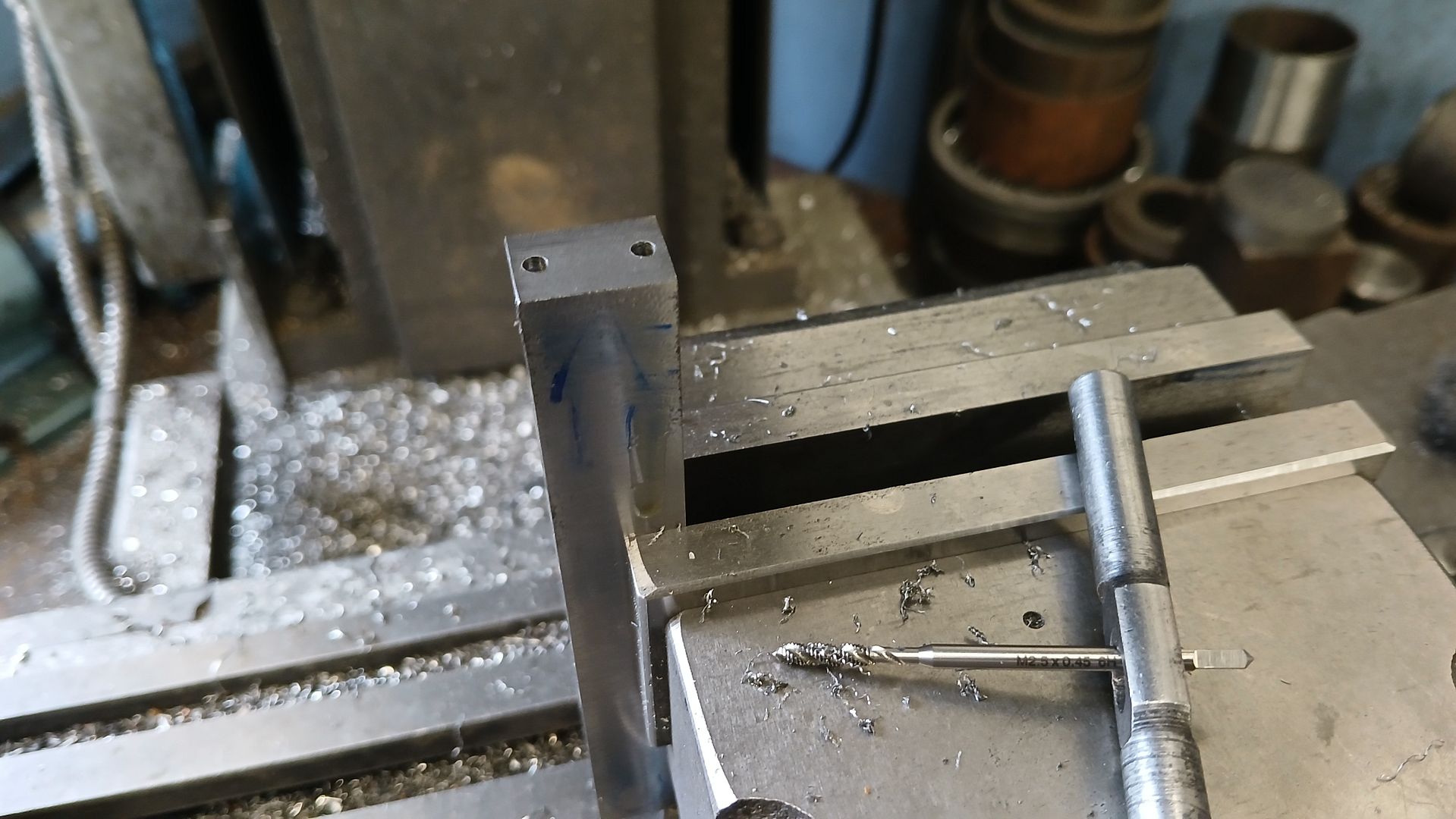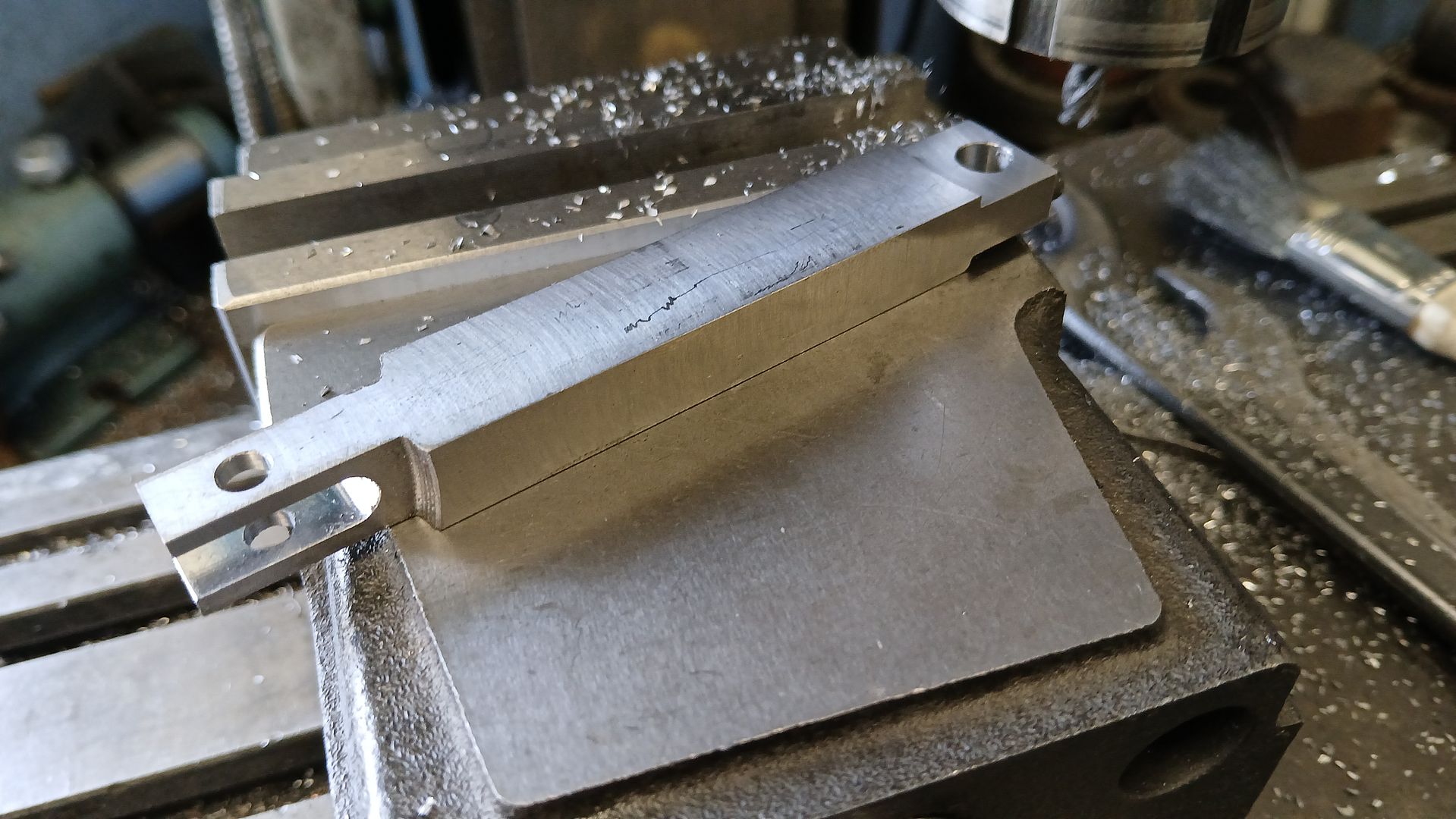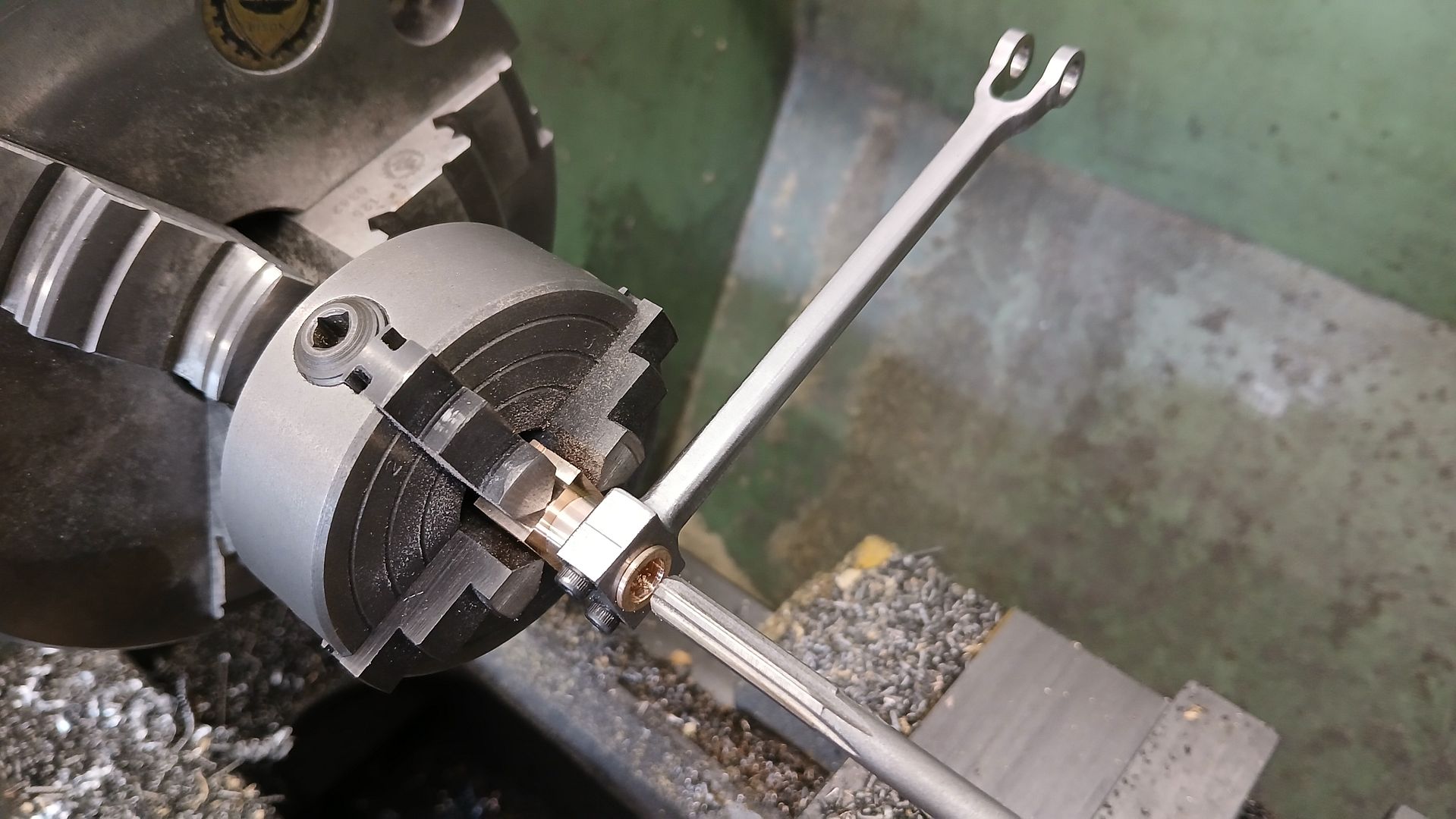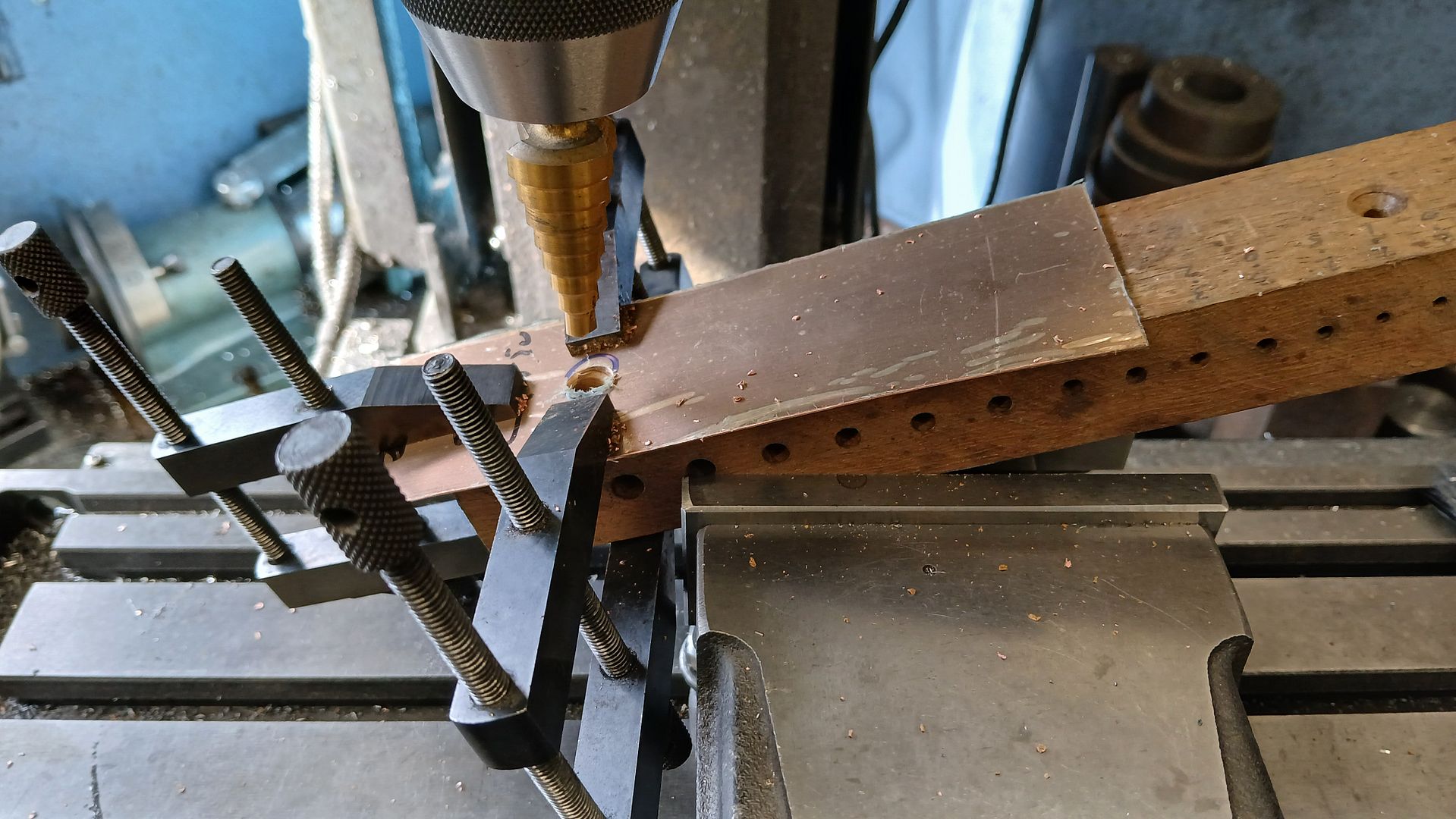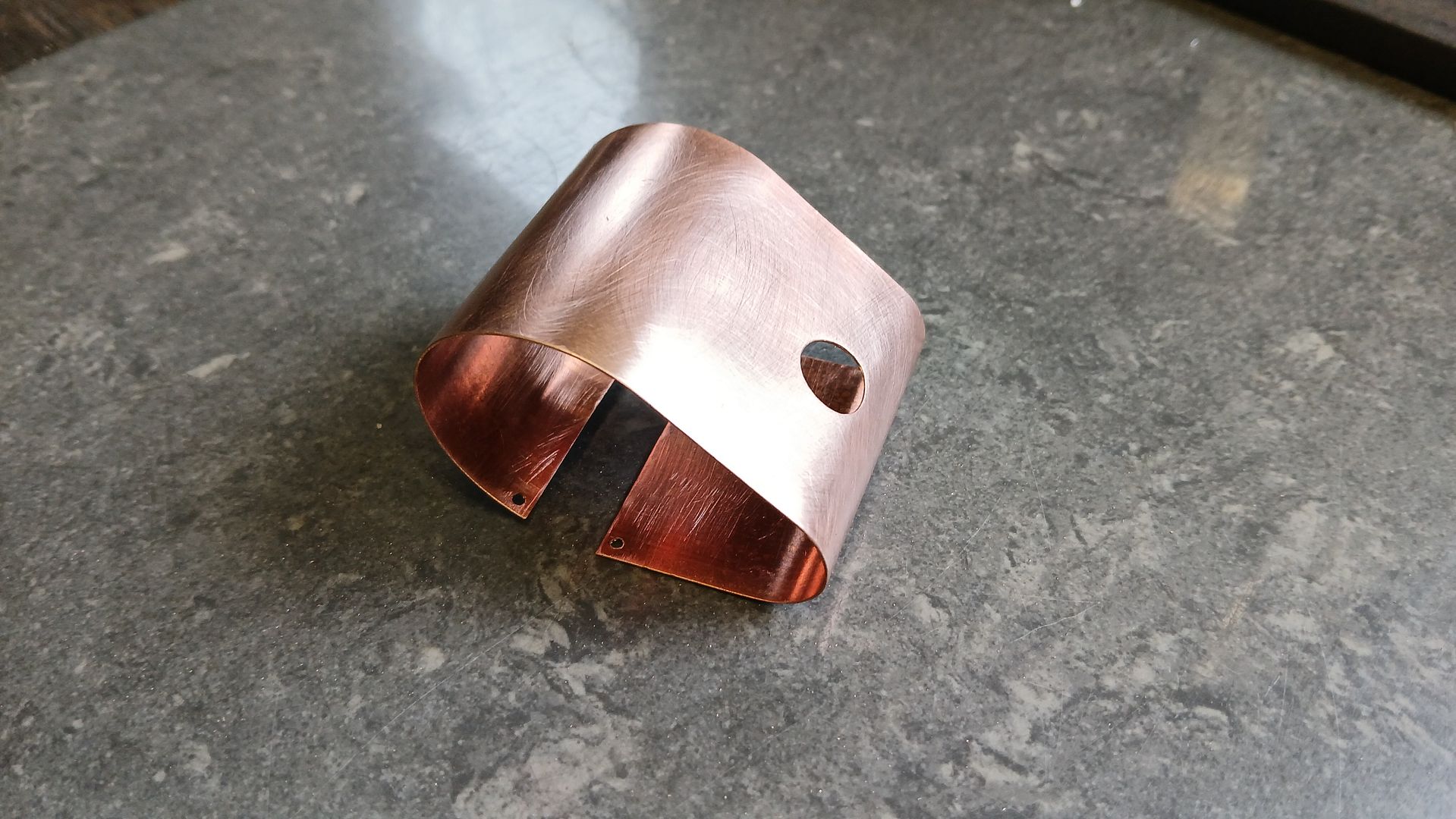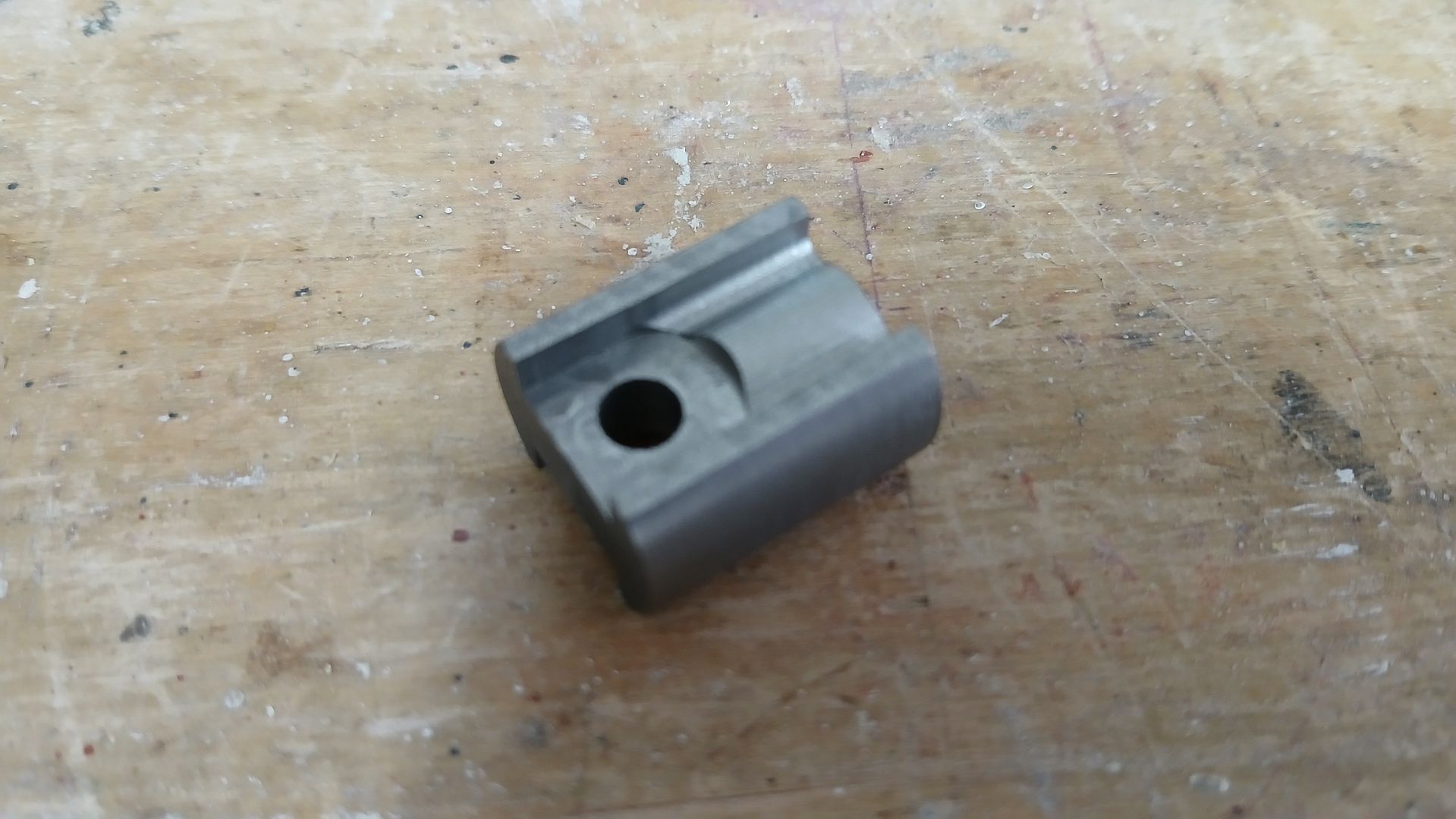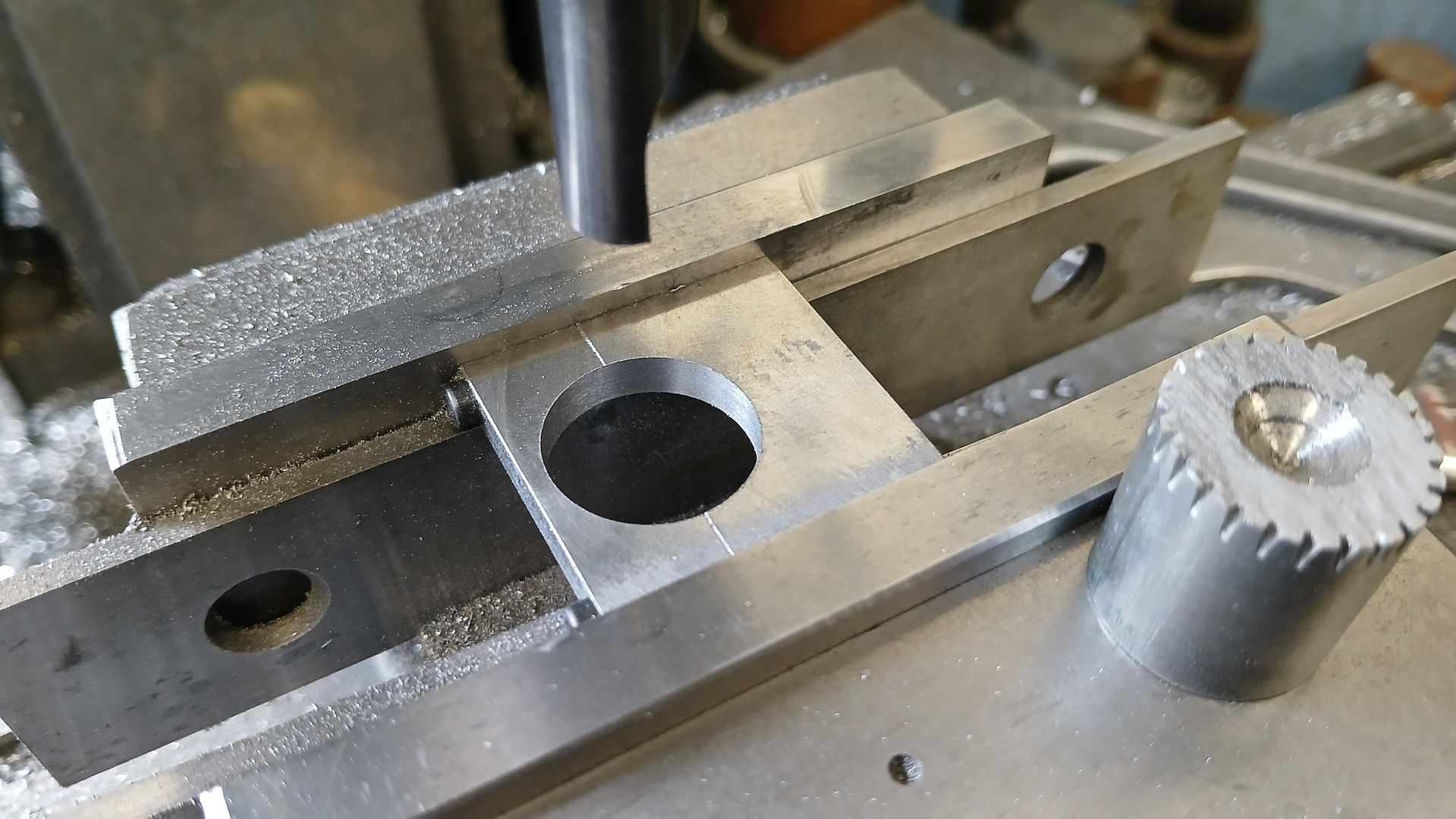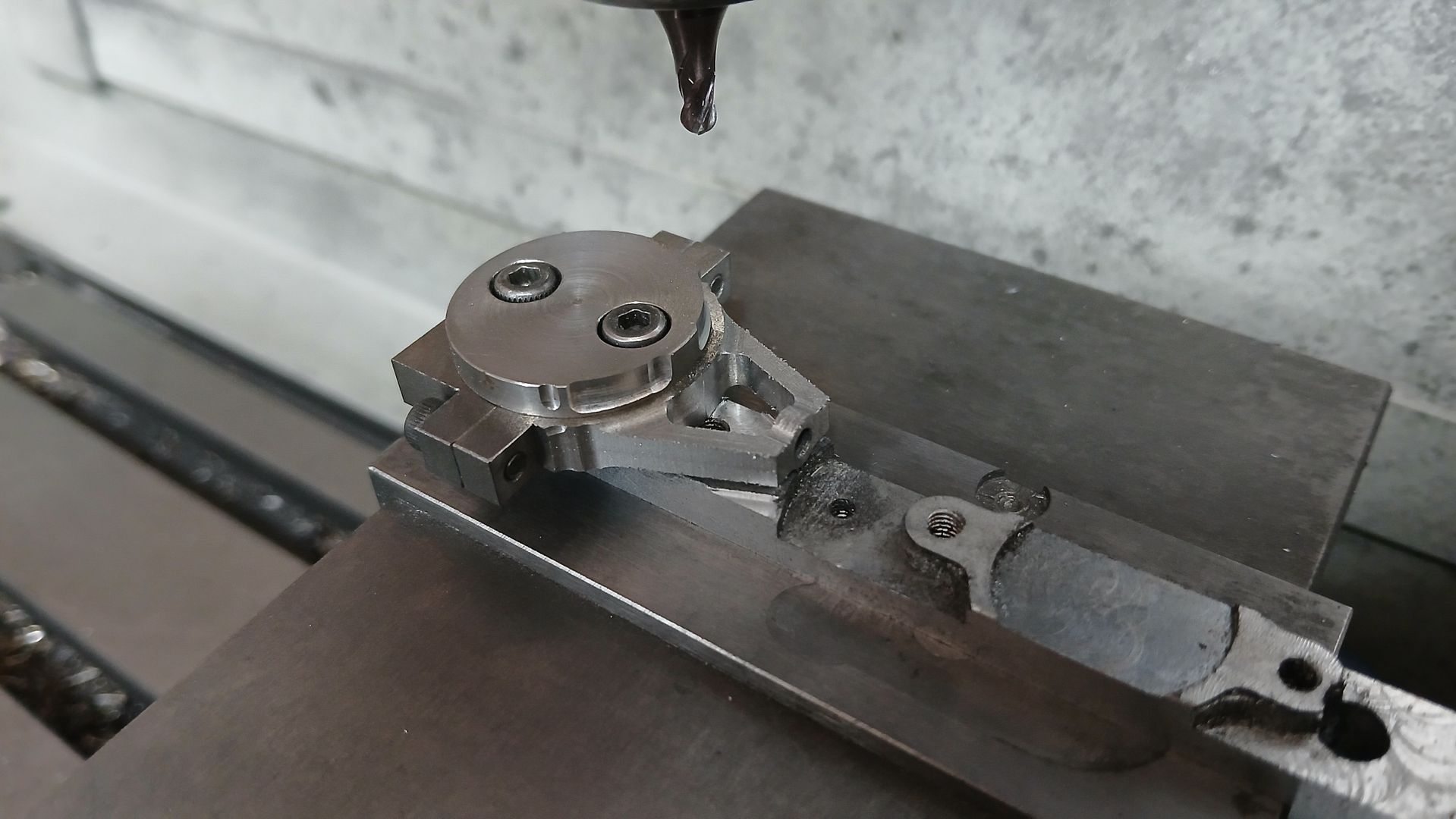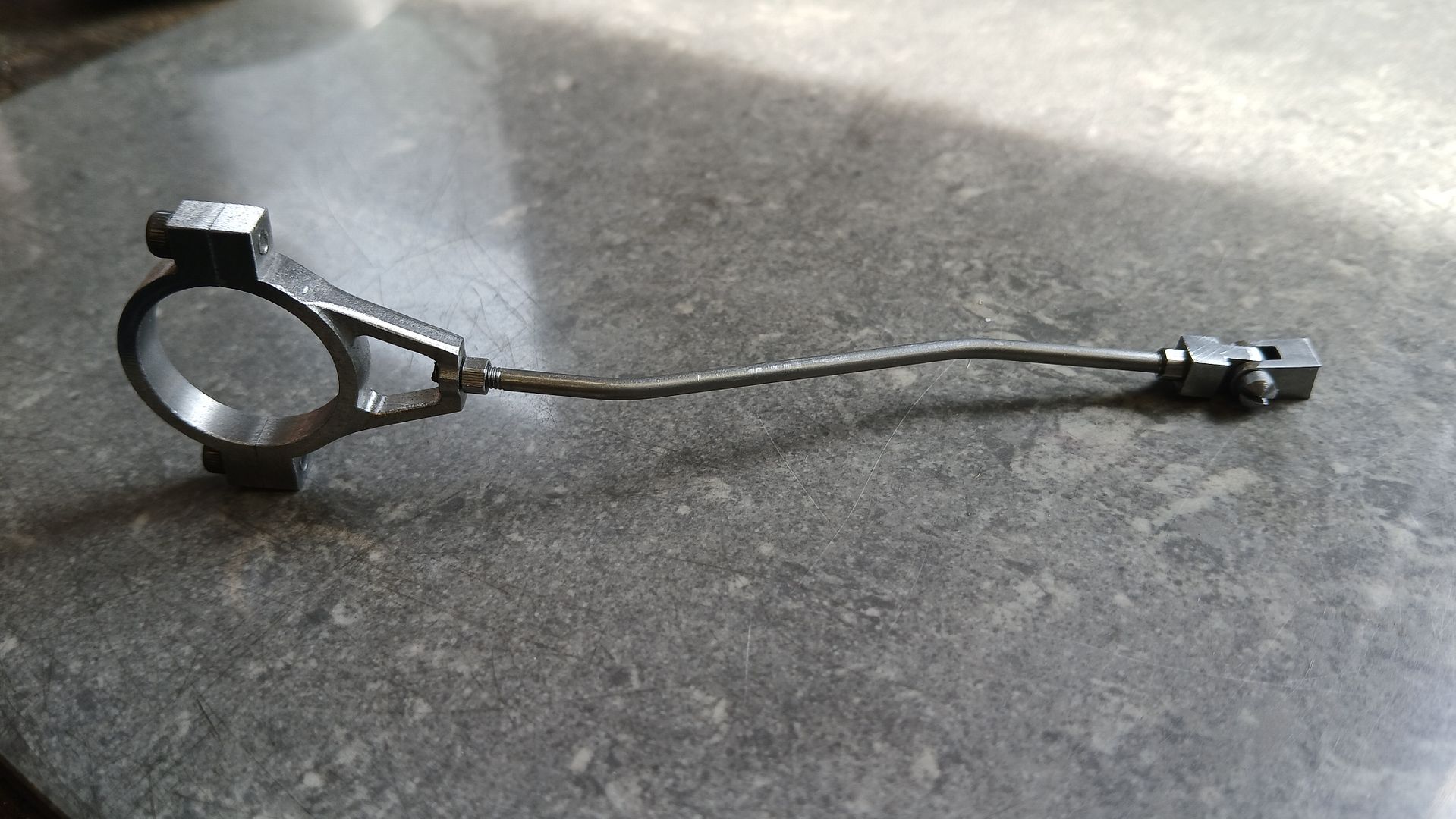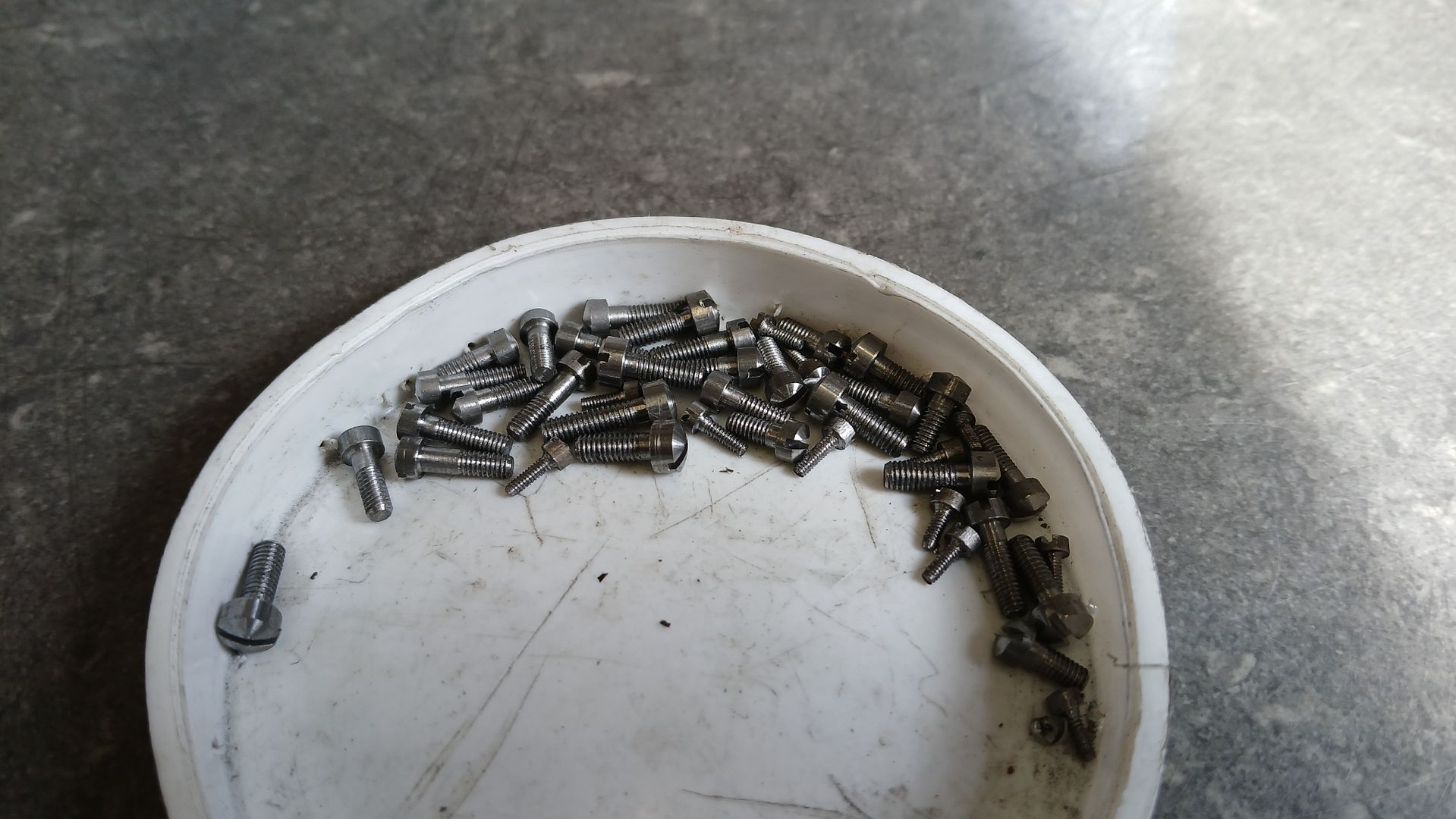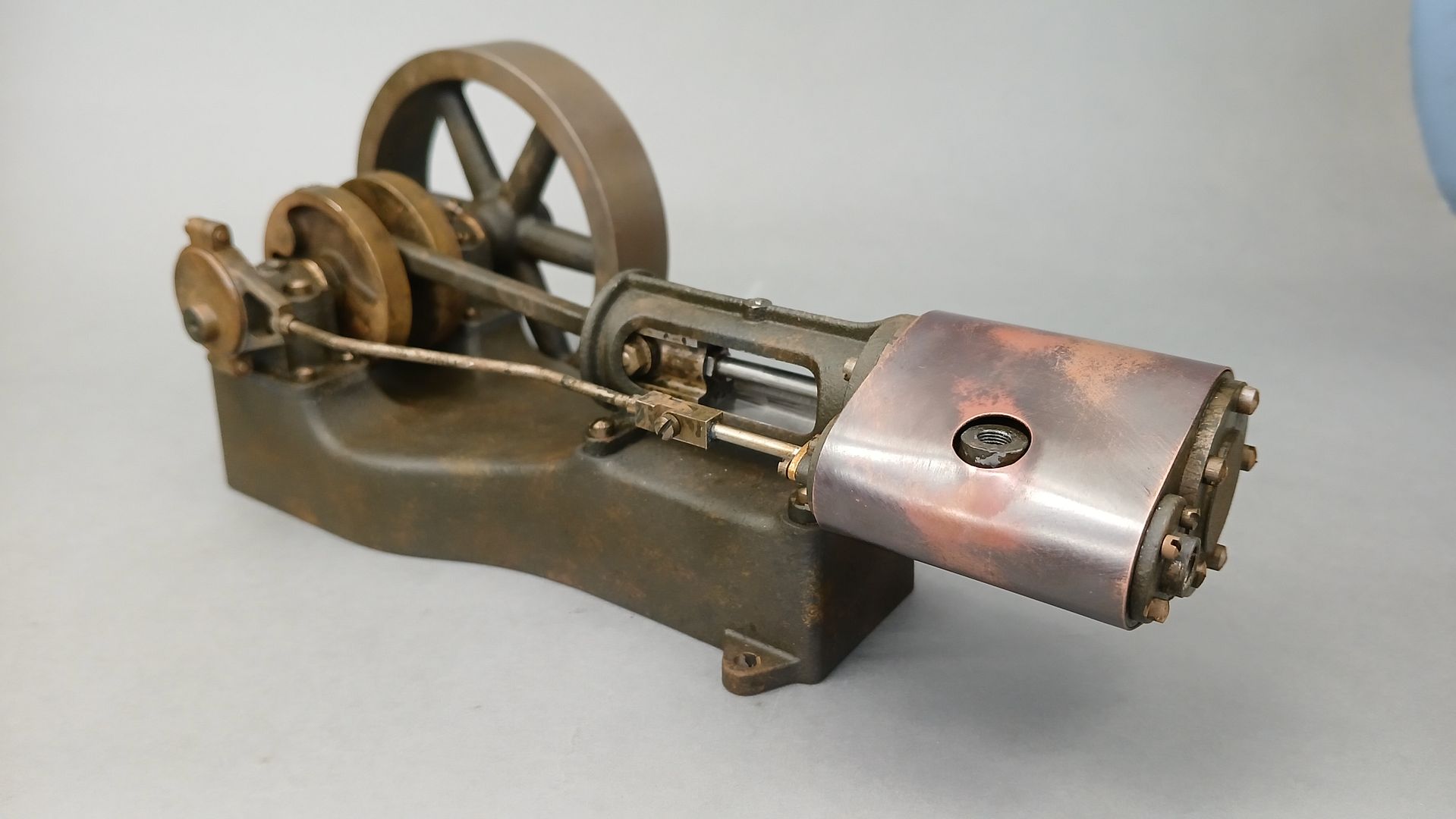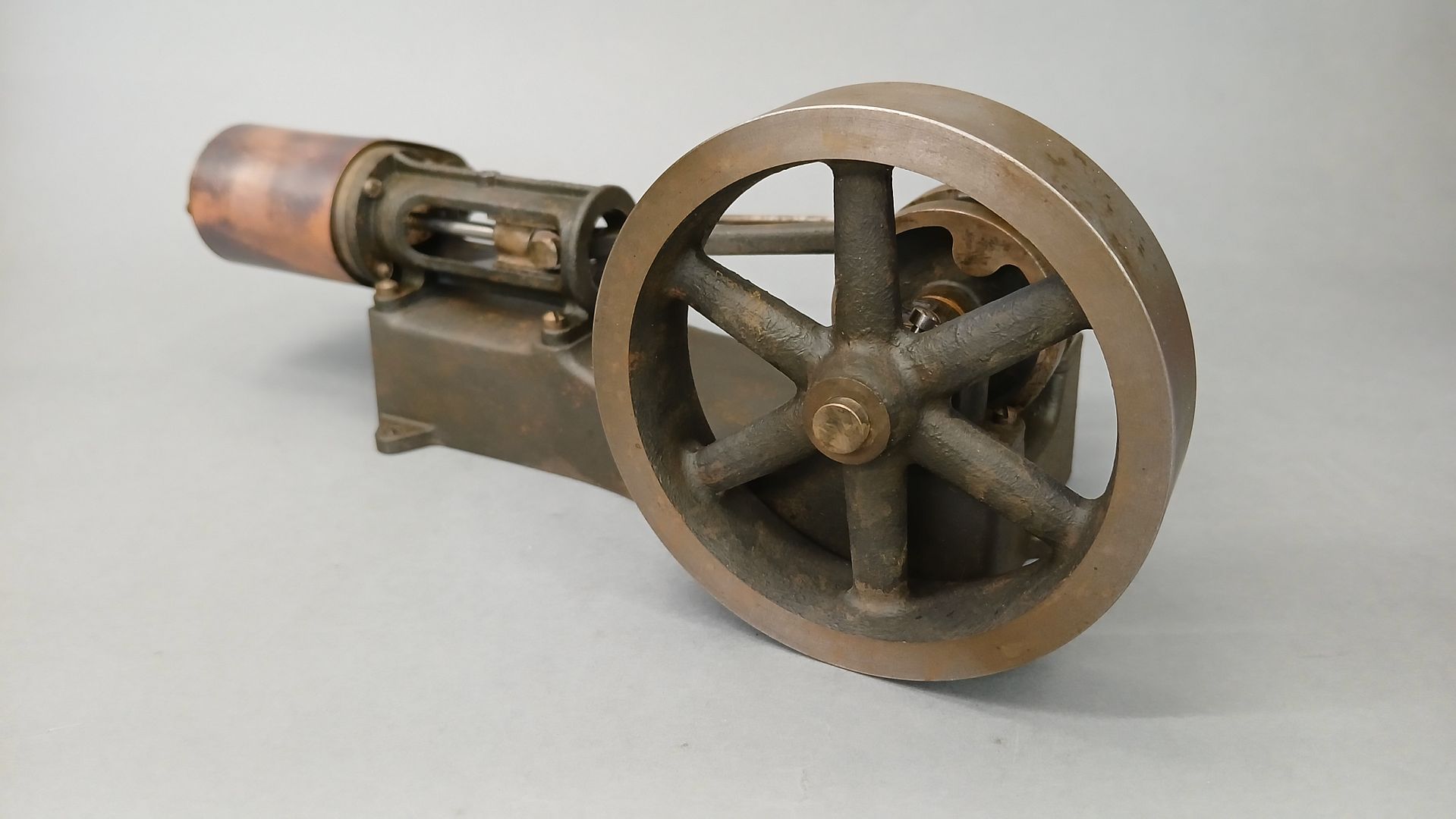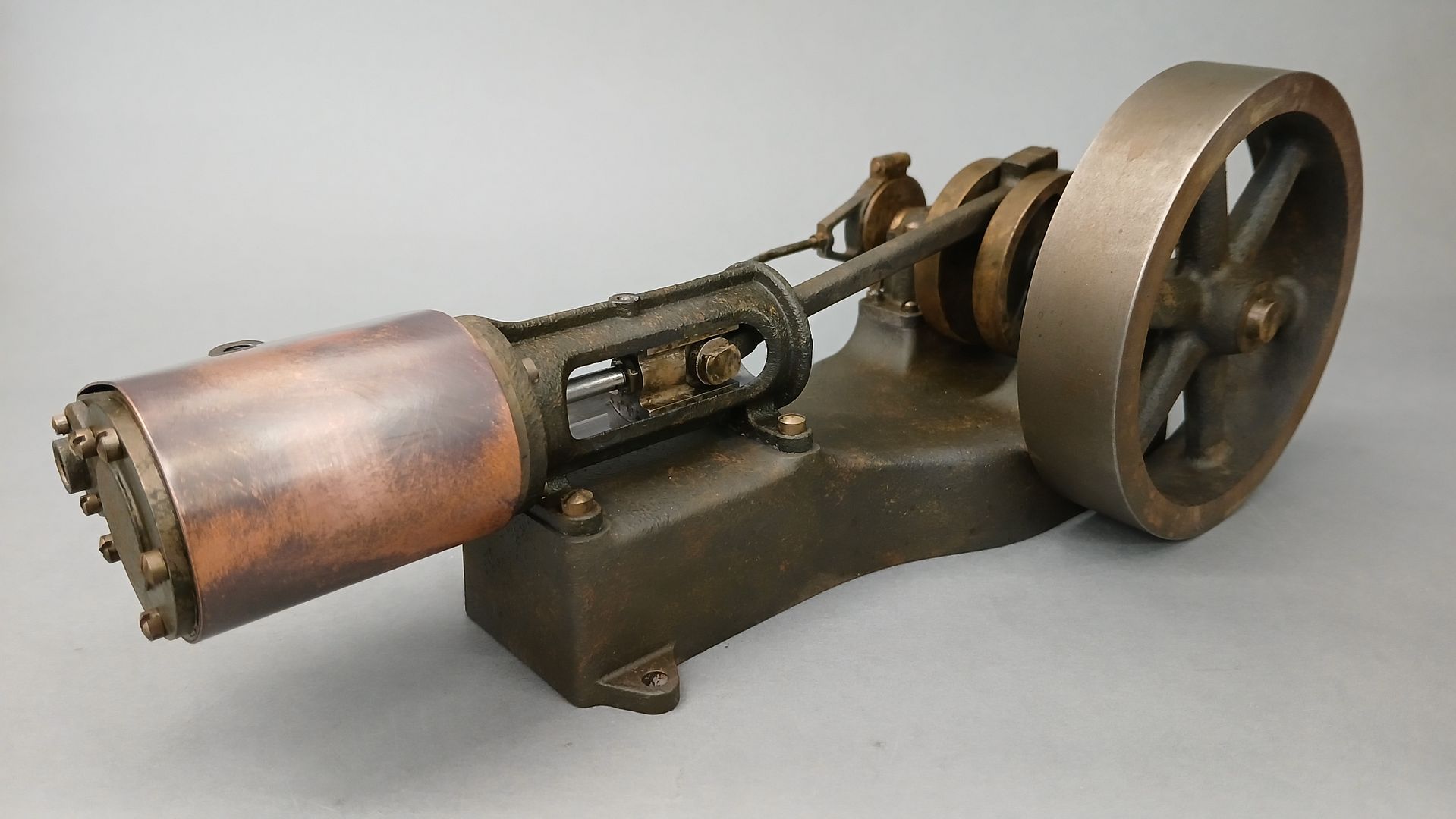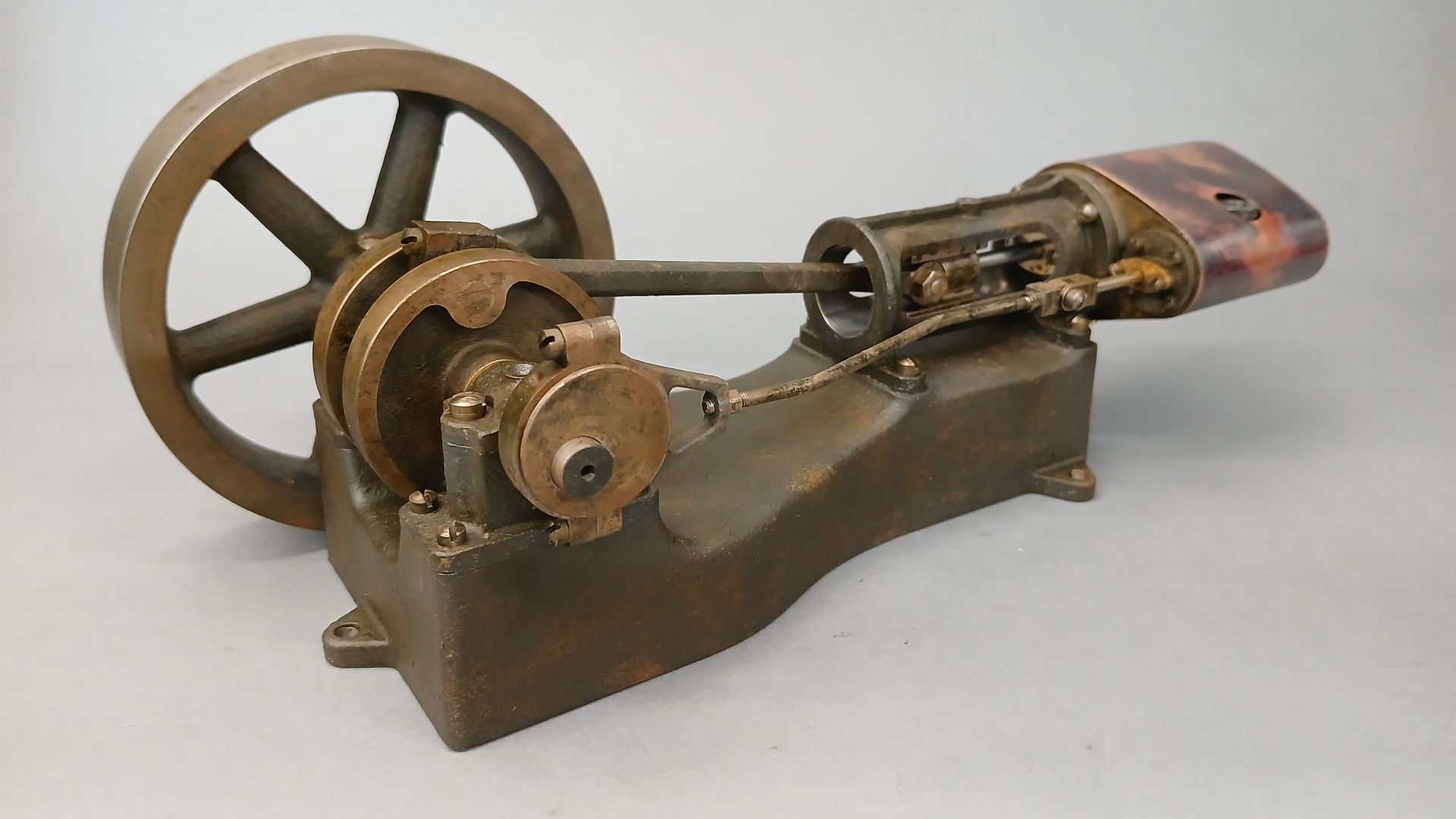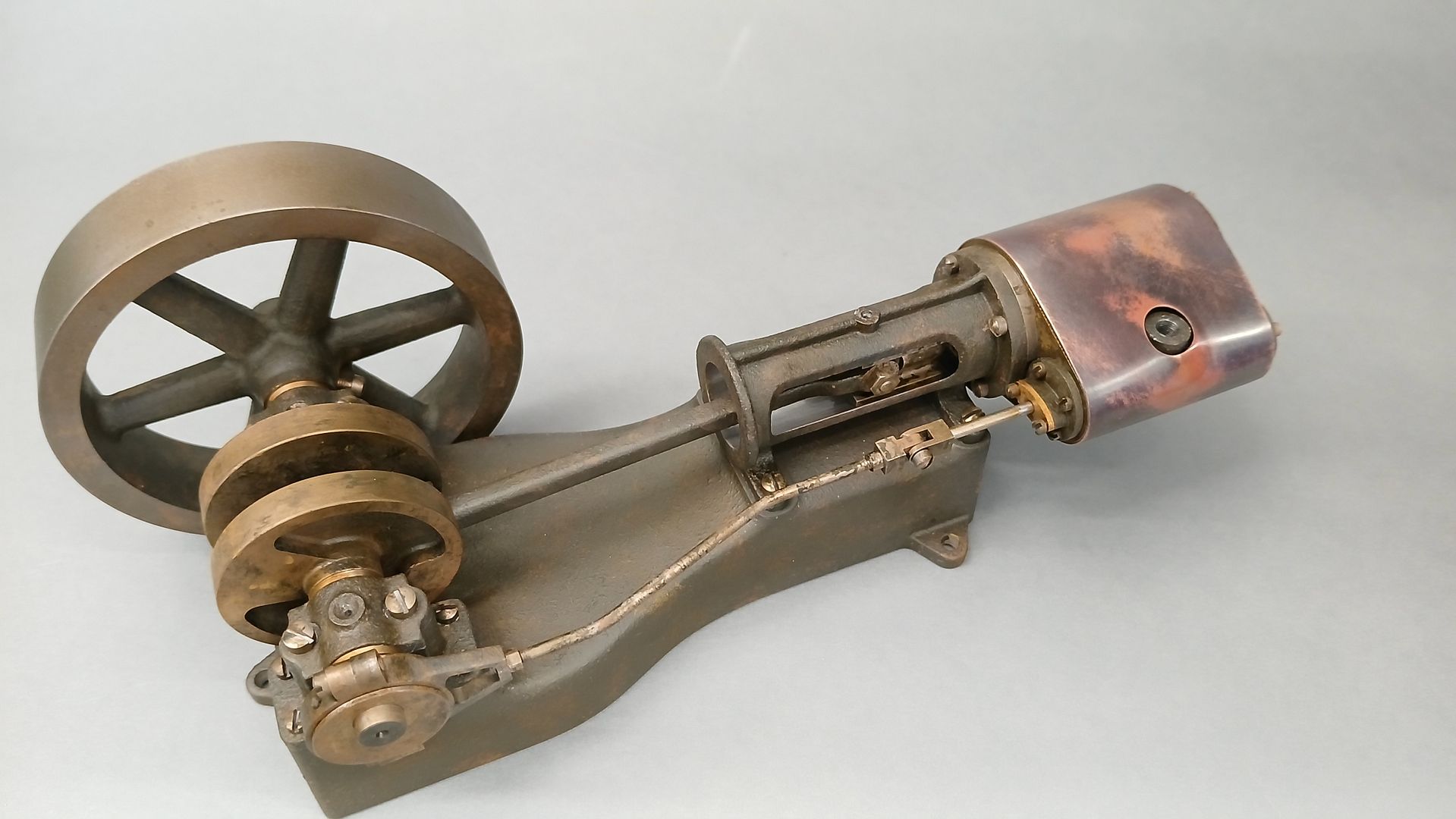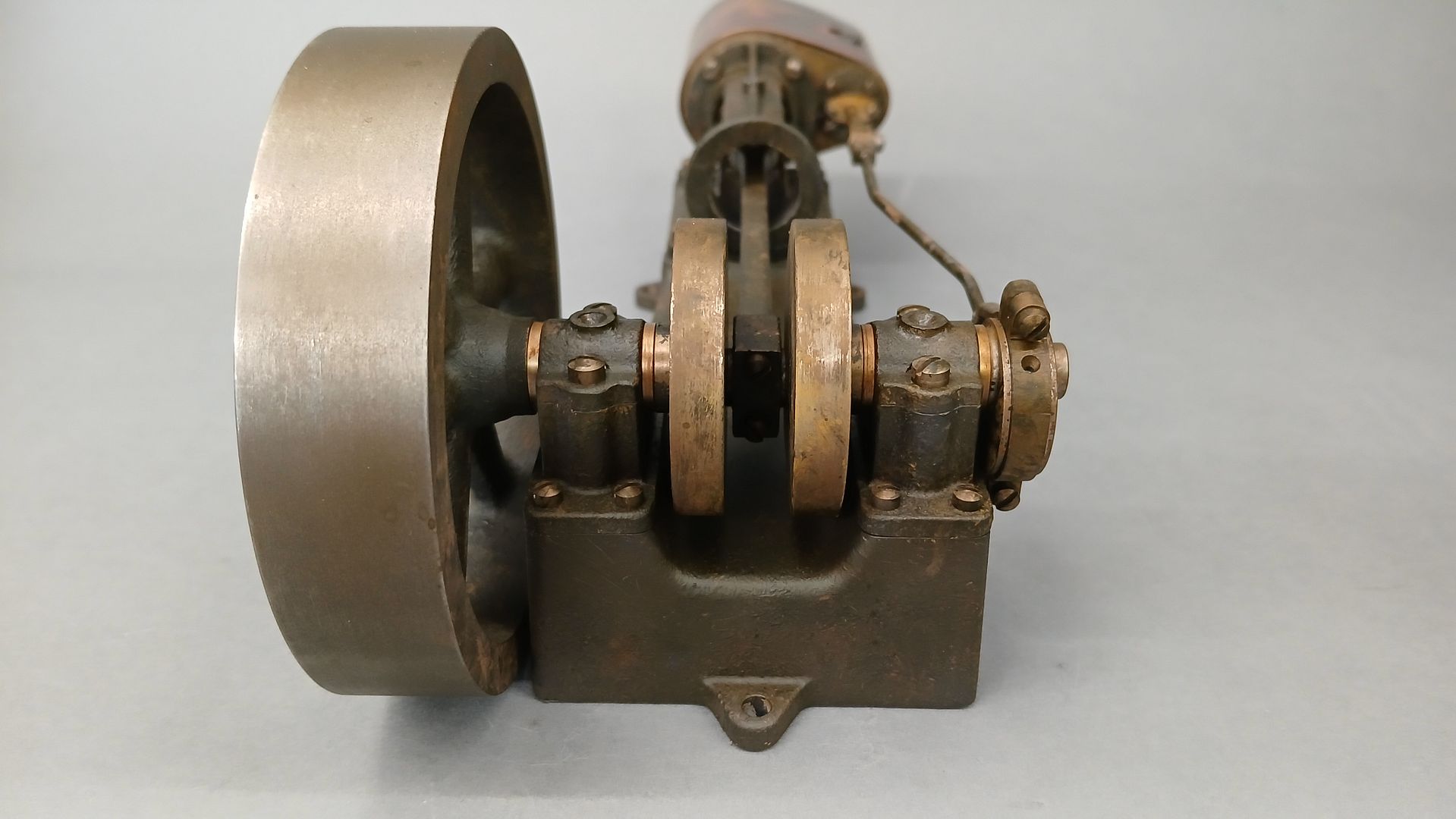The Cylinder was cut from a block of cast iron. First I machined all the faces with a Shell mill fitted with inserts intended for Aluminium leaving 1mm on the sides, top, bottom and one end. This was then held in the mill vice and the ctr of the piston and valve bores spotted before drilling the valve hole 7.8mm and reaming out to 8mm.

Transfering it over to the 4-jaw the second spot mark was clocked true, the bore opened out with a couple of different size drills and then finish bored to 20mm. A also faced off this end where the piston rod goes at the same setting to ensure it was true to the bore.

While the cylinder was an easy to hold shape I did the rest of the details – tapped holes for cylinder and valve covers, steam passage and the notch to connect that to the cylinder. The other end was almost the same except it had a 4 hole pattern for the cylinder cover.

There was also a tappe dhole for the steam inlet and two holes to connect the valve chamber to the steam passages, the outer part of these holes is tapped M4 x 0.5 and will get plugged after the shaping has been done.

It was then onto the CNC to machine the “cast” shape of the cylinder. I did this in two stages, first the teardrop shape between the two flanges with the work horizontal and then the actual flanges with it held vertically.
The first part was done with an adaptive to remove the majority of the waste, a quick horizontal to finish the top of the inlet boss, a contour to remove metal from thinner flange faces so that the final scallop path did not drive the cutter into these vertical faces at full depth which was more than the flute length.
The “Ace of Clubs” mark you can see on the surface is the result of a tiny bit of backlash in the Z axis and is where the cutter changes from a downward cut to going back up the other side or vice versa. Probably less than 0.025mm (1thou).


I will cover the rest of the cylinder in the next update.
Diogenes.


